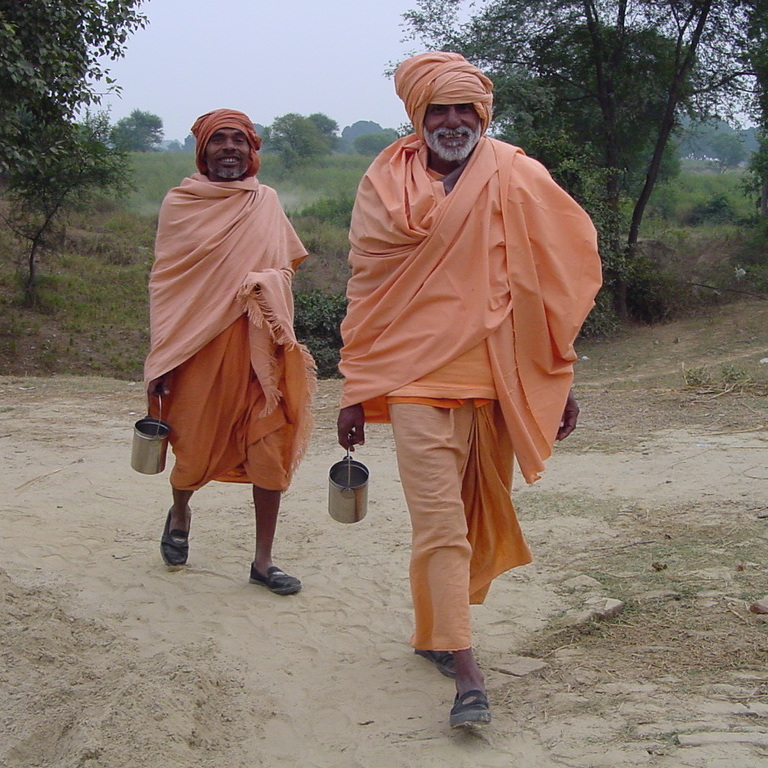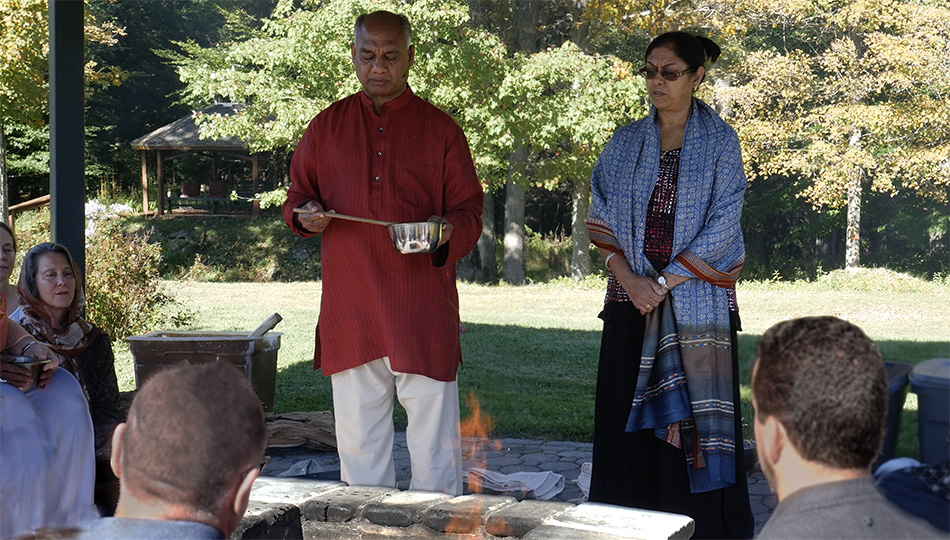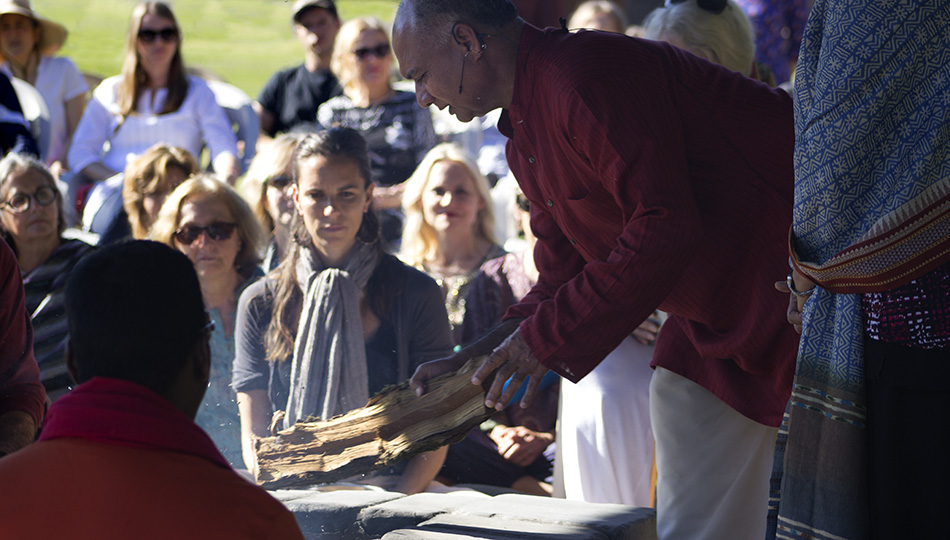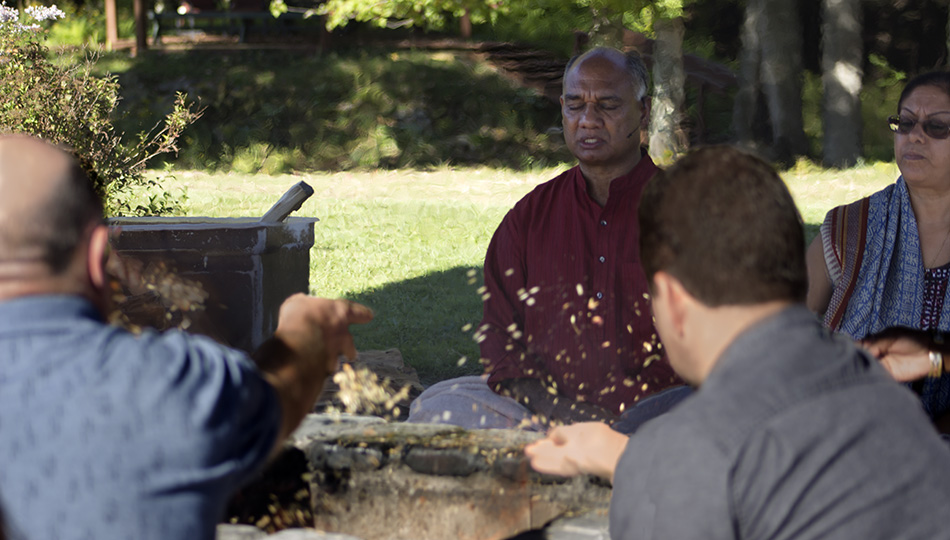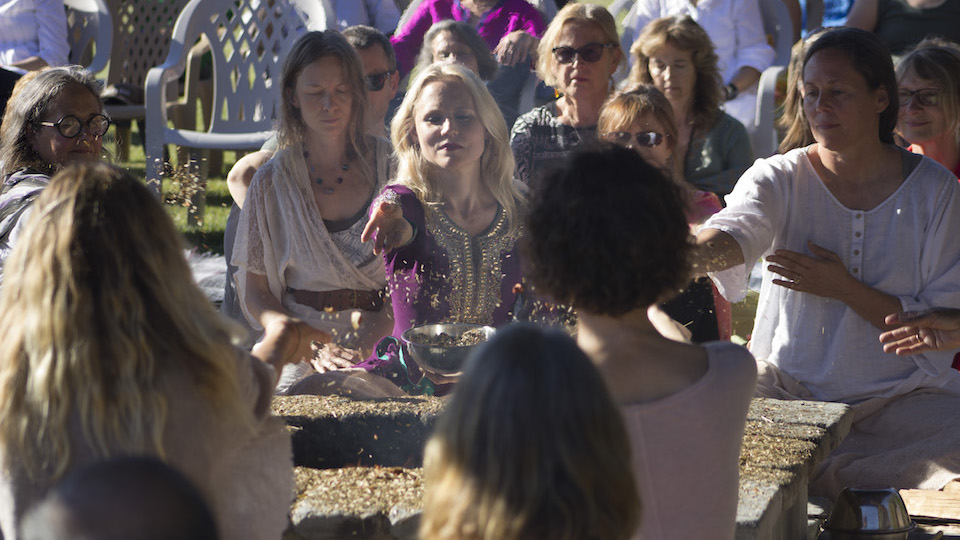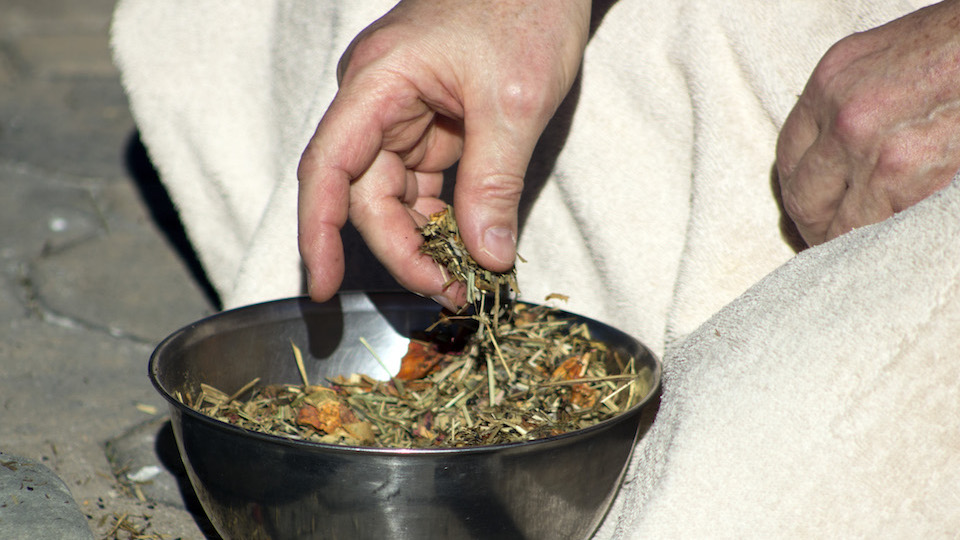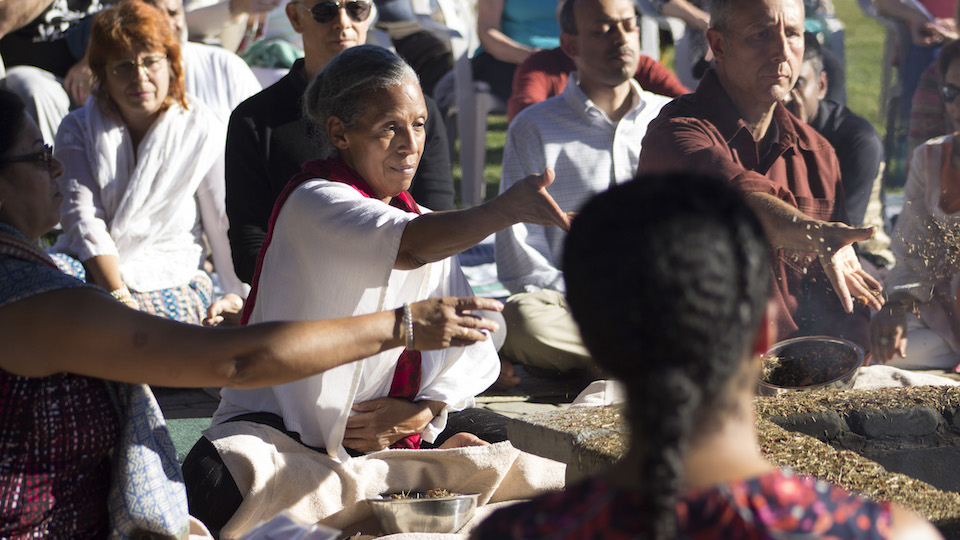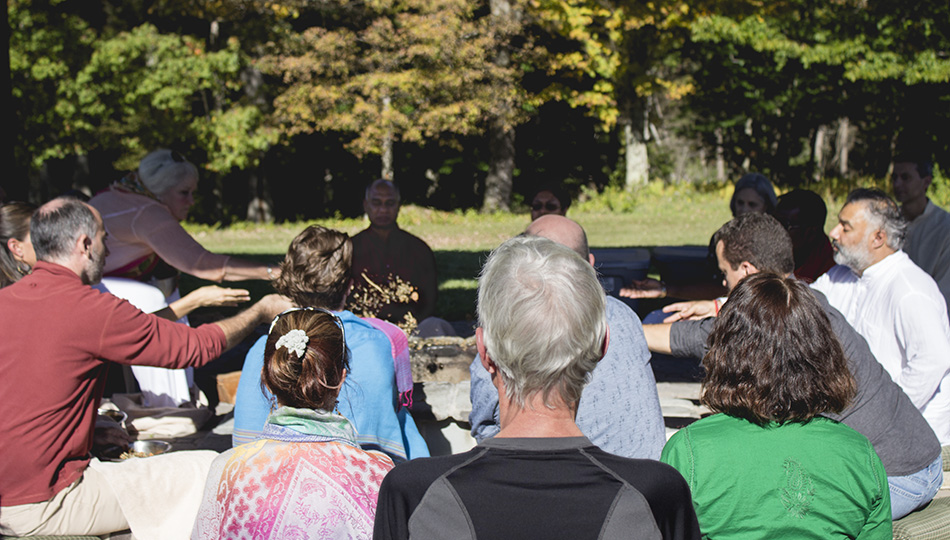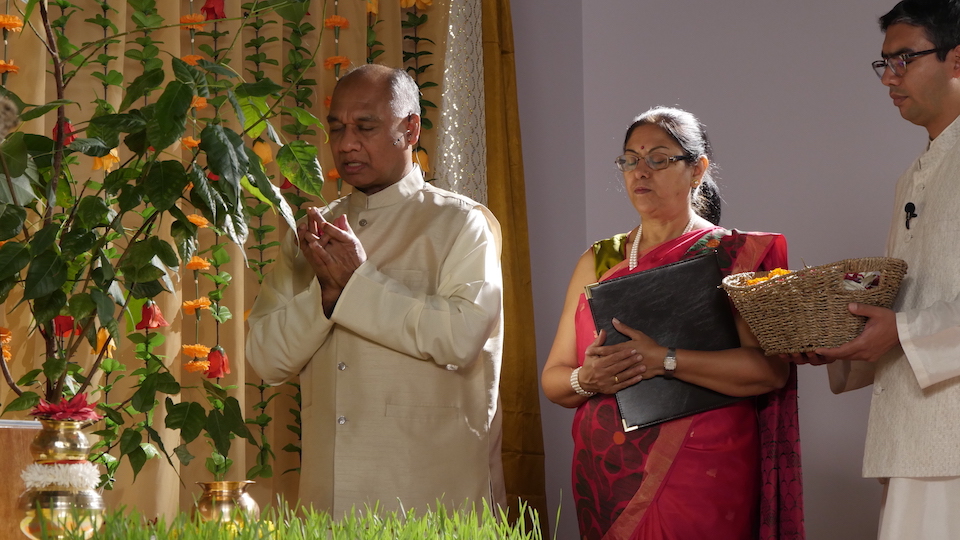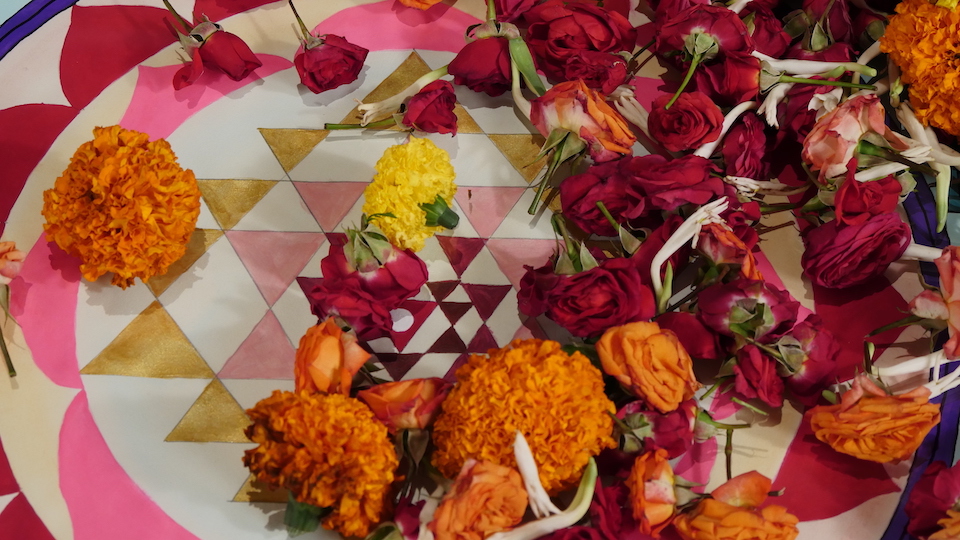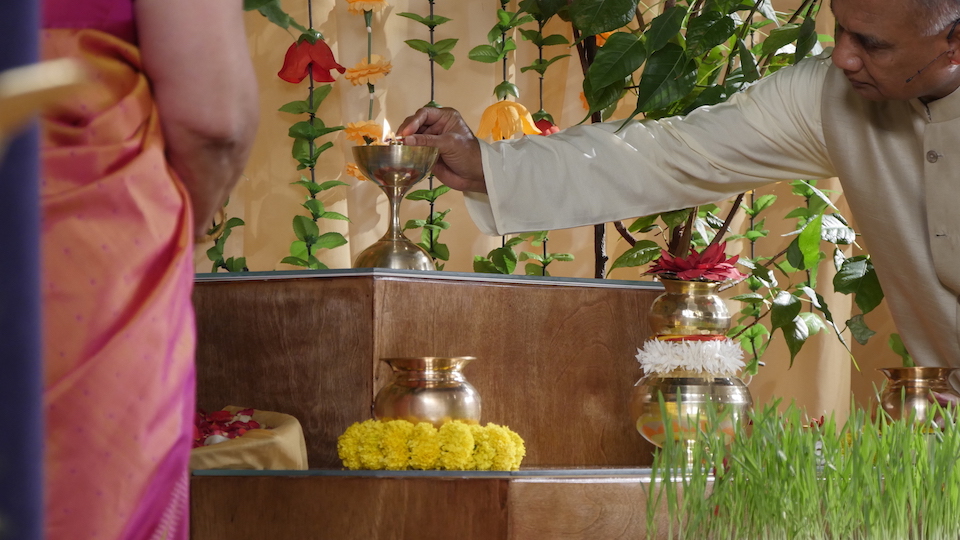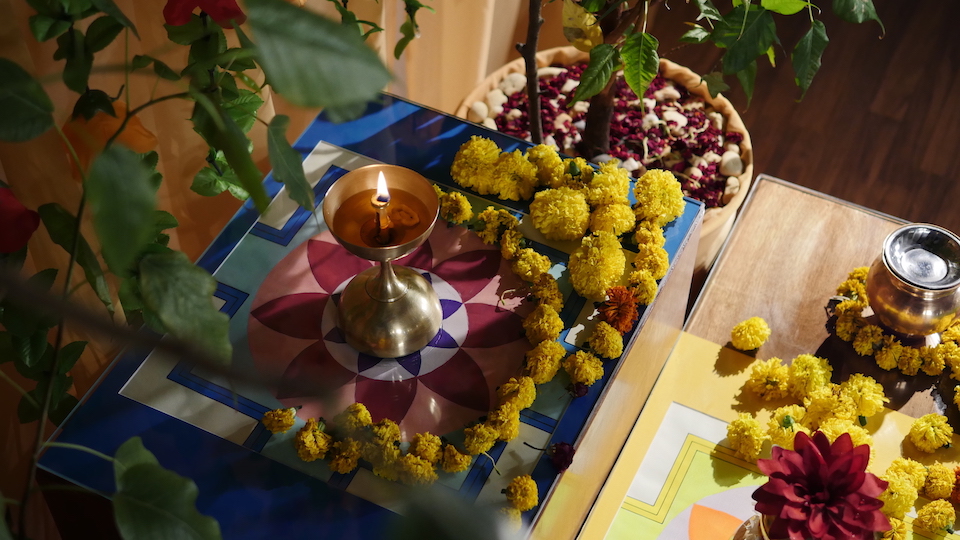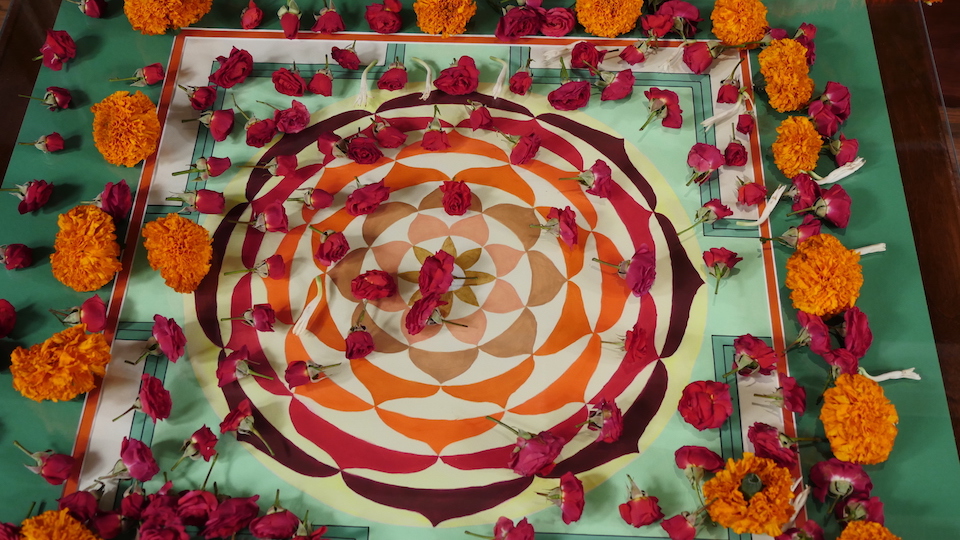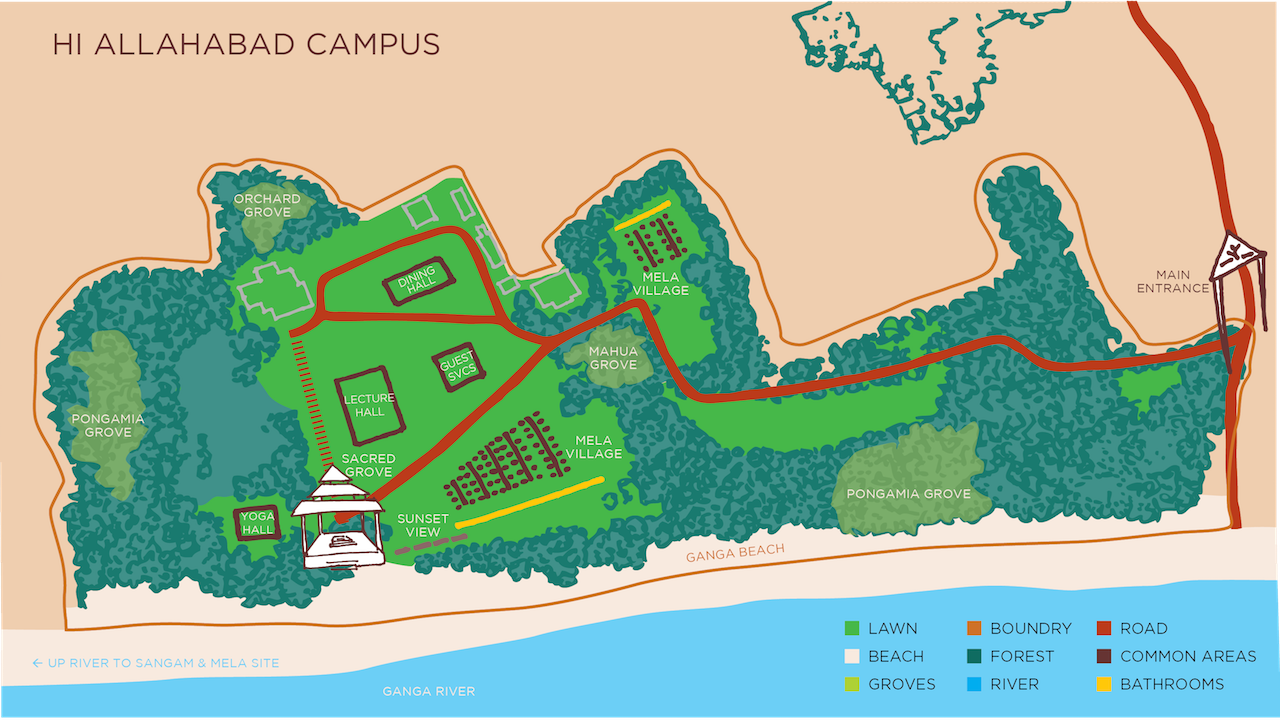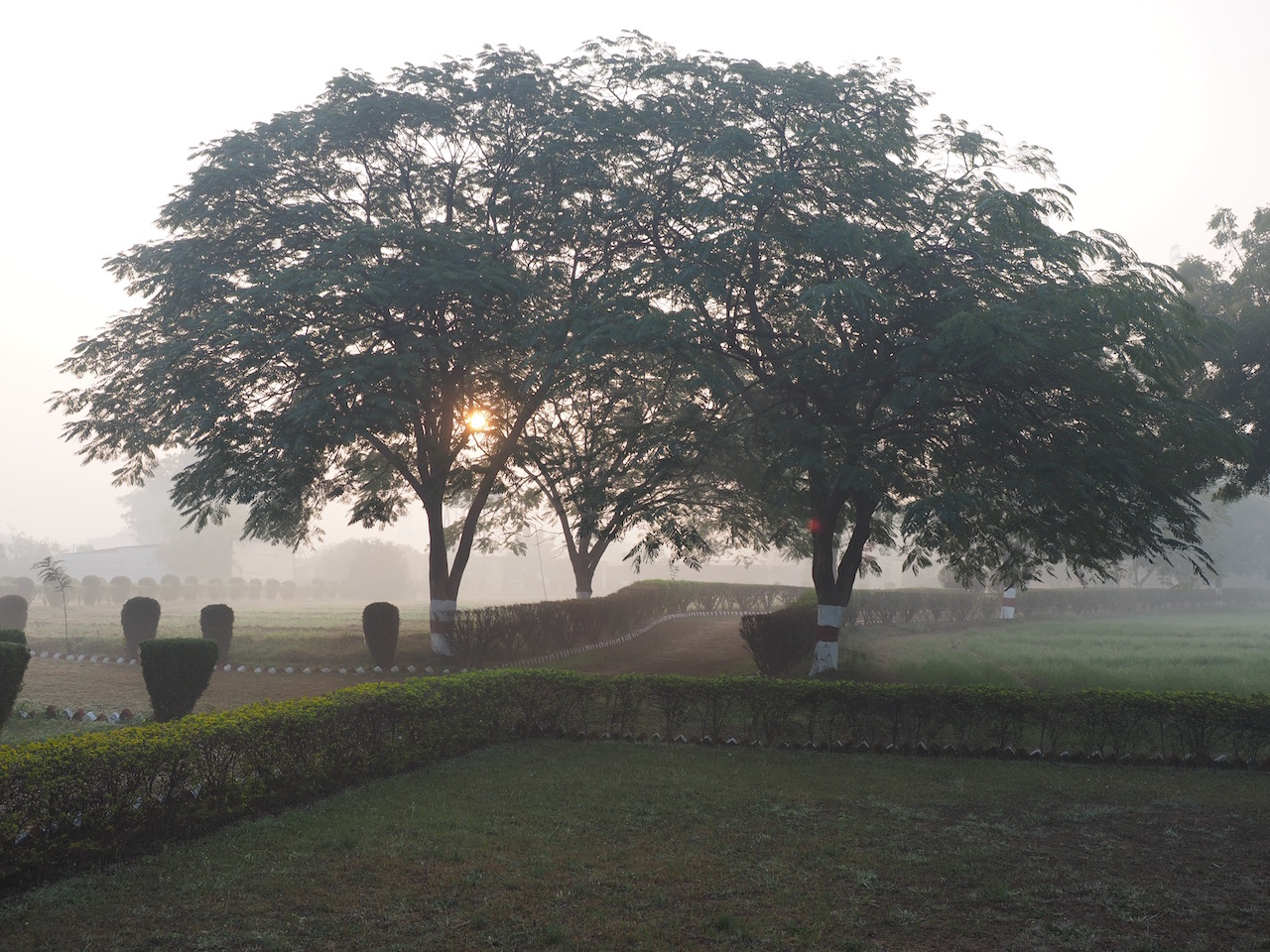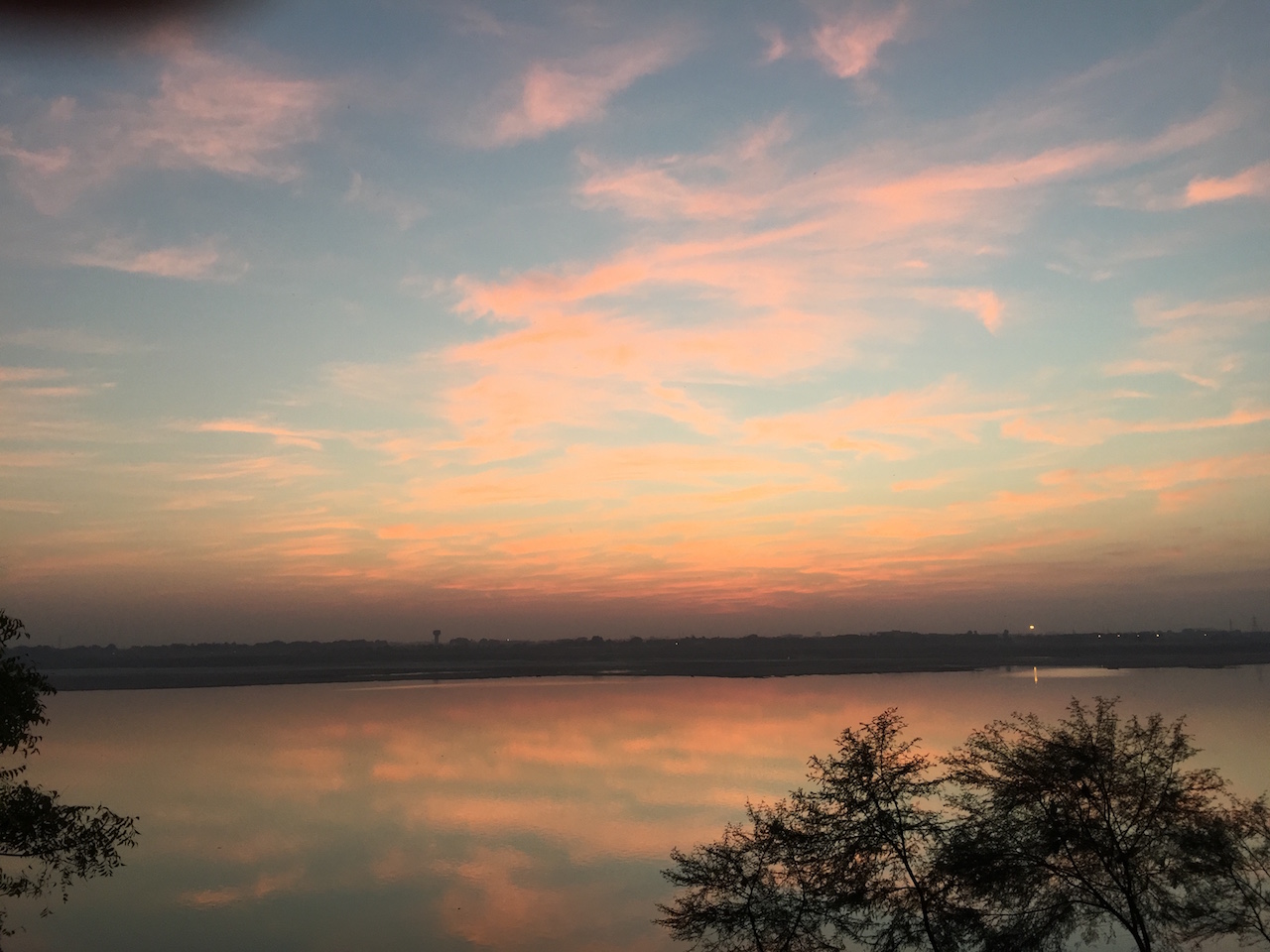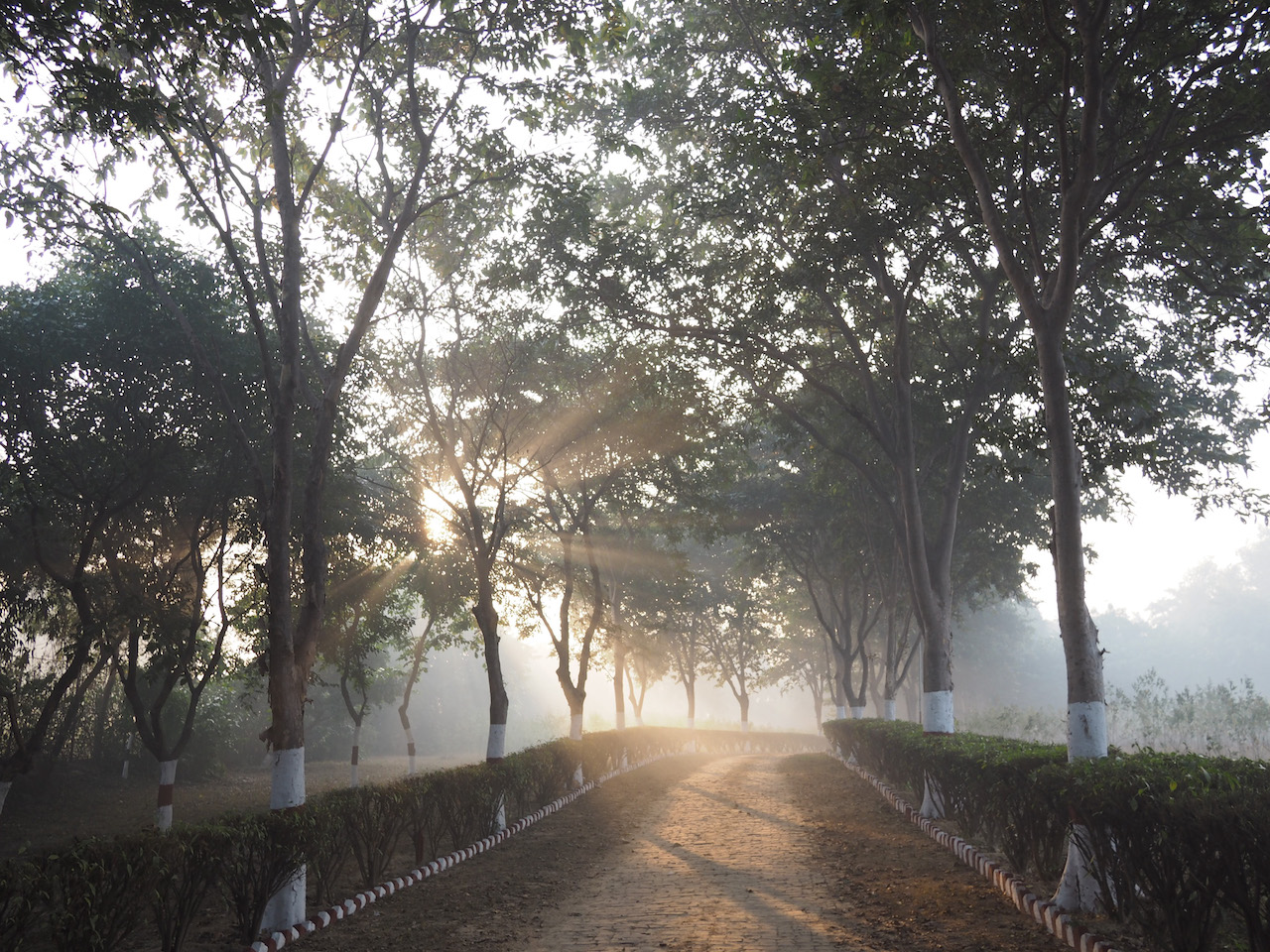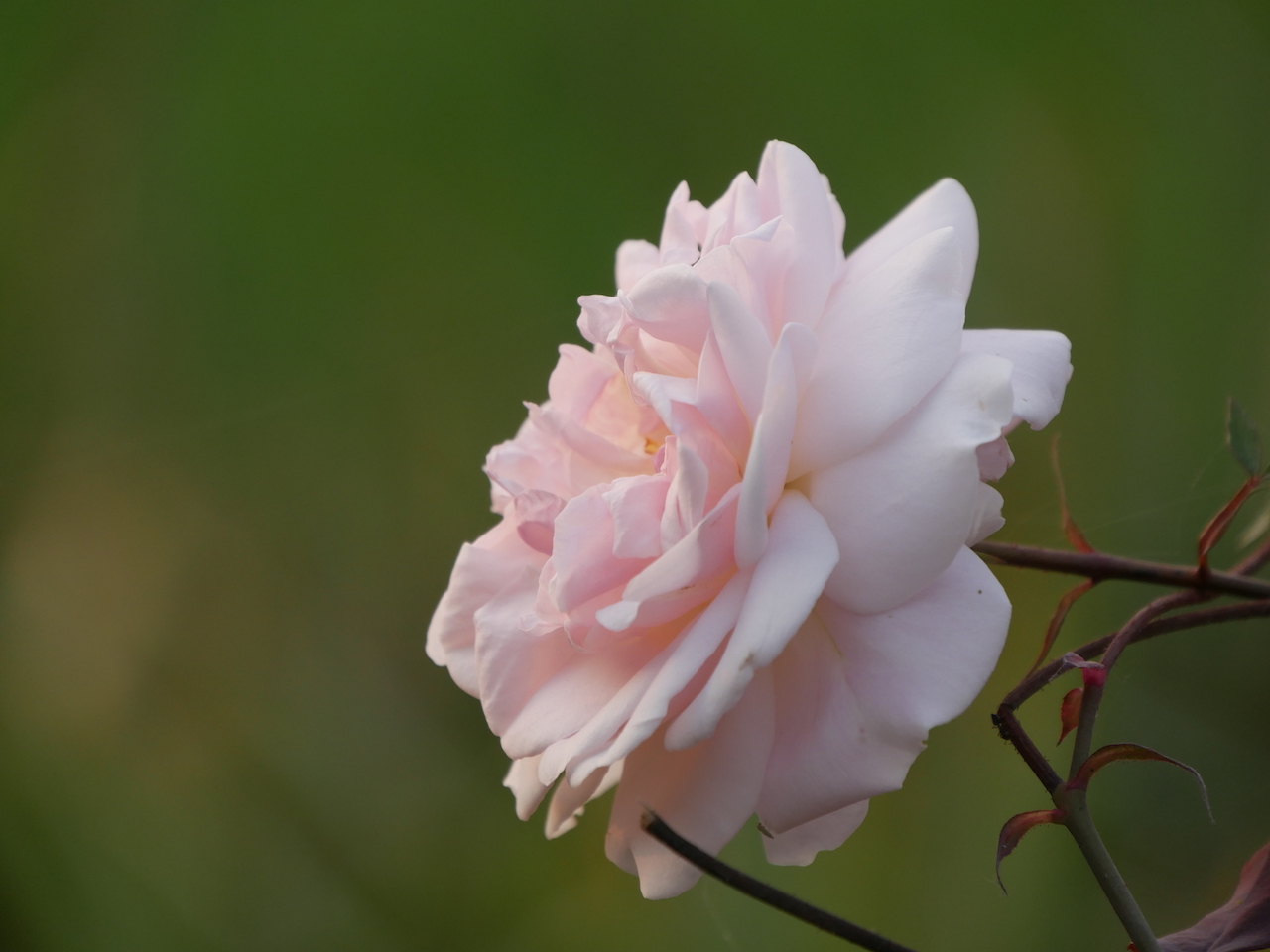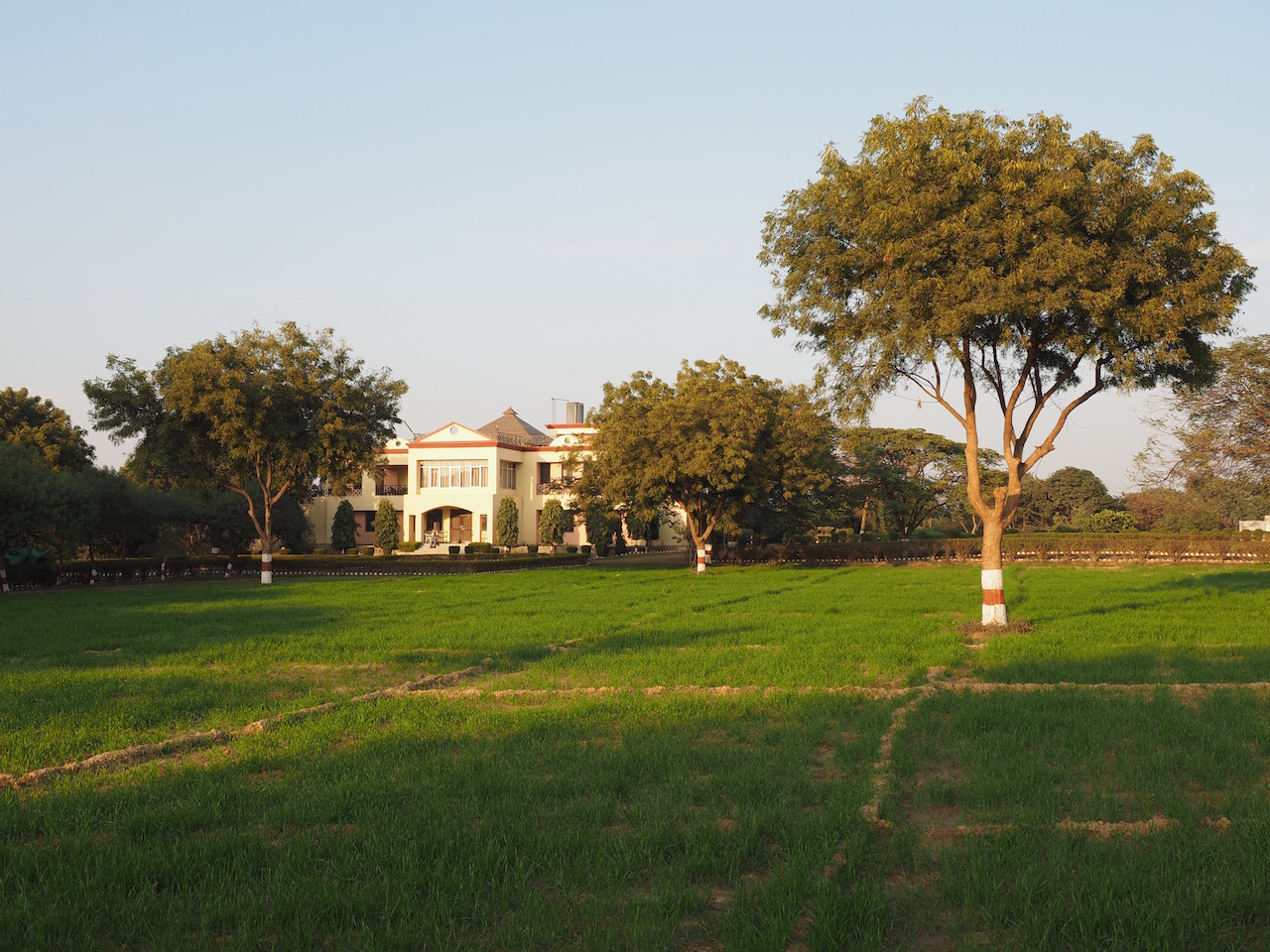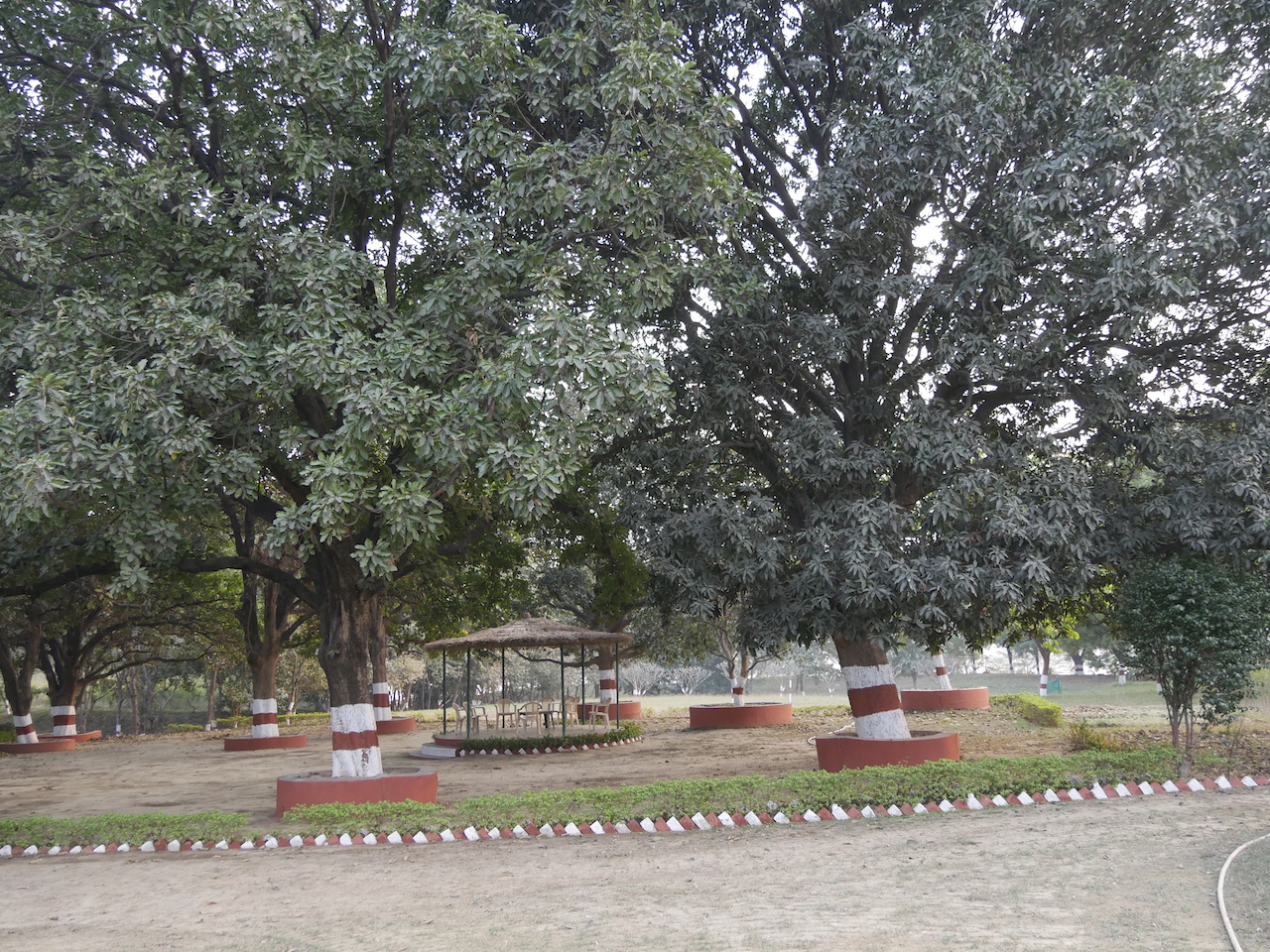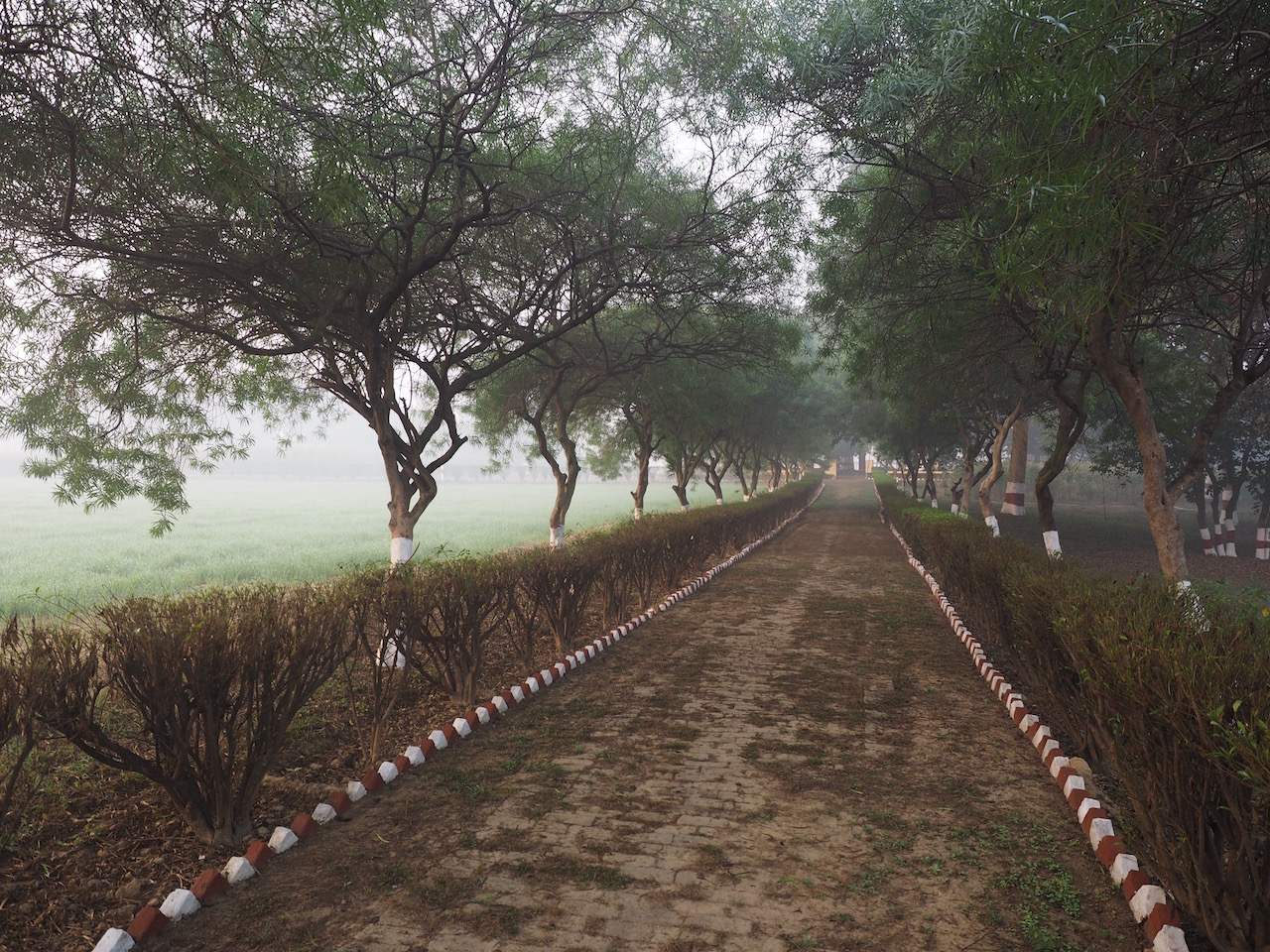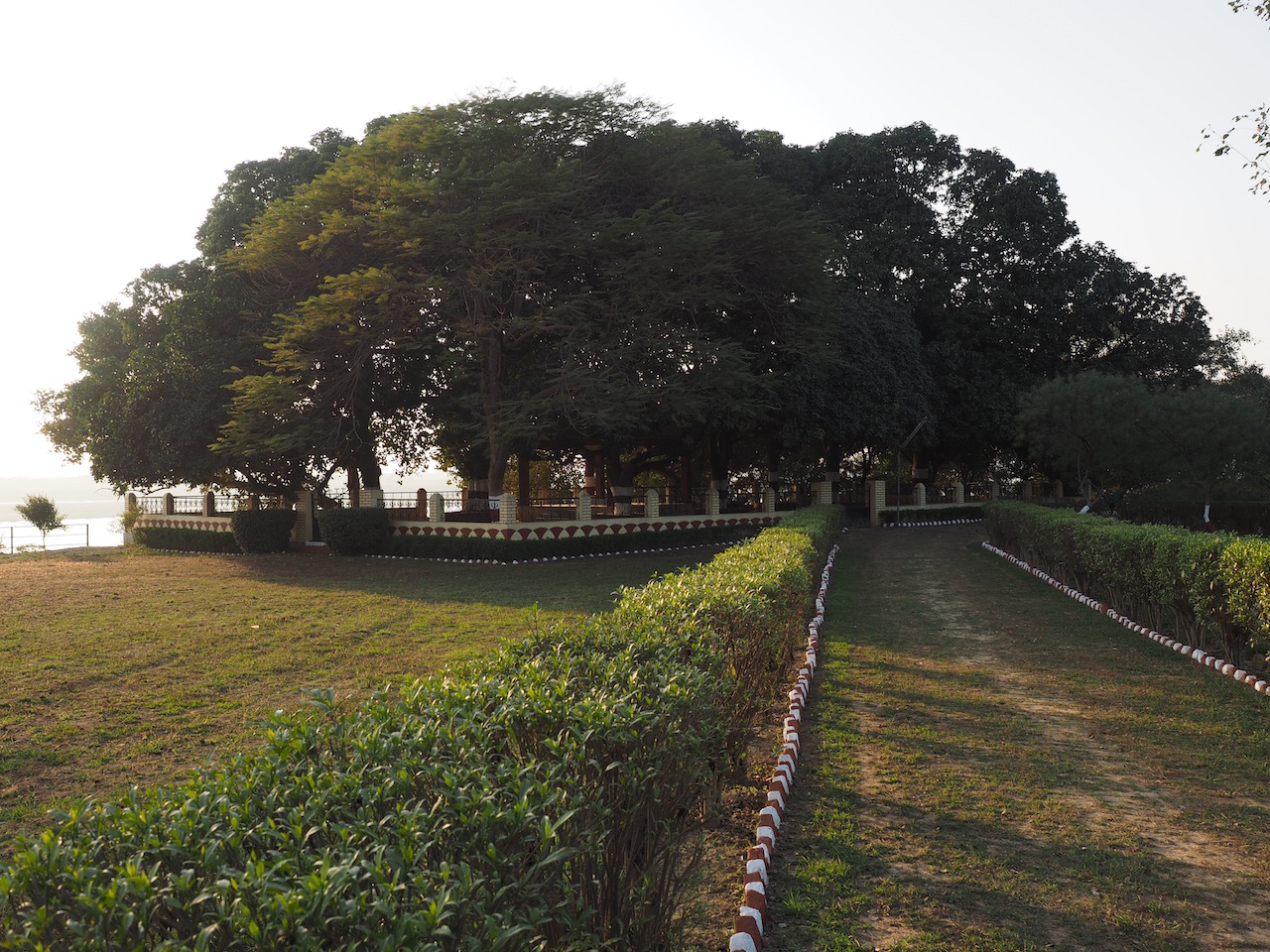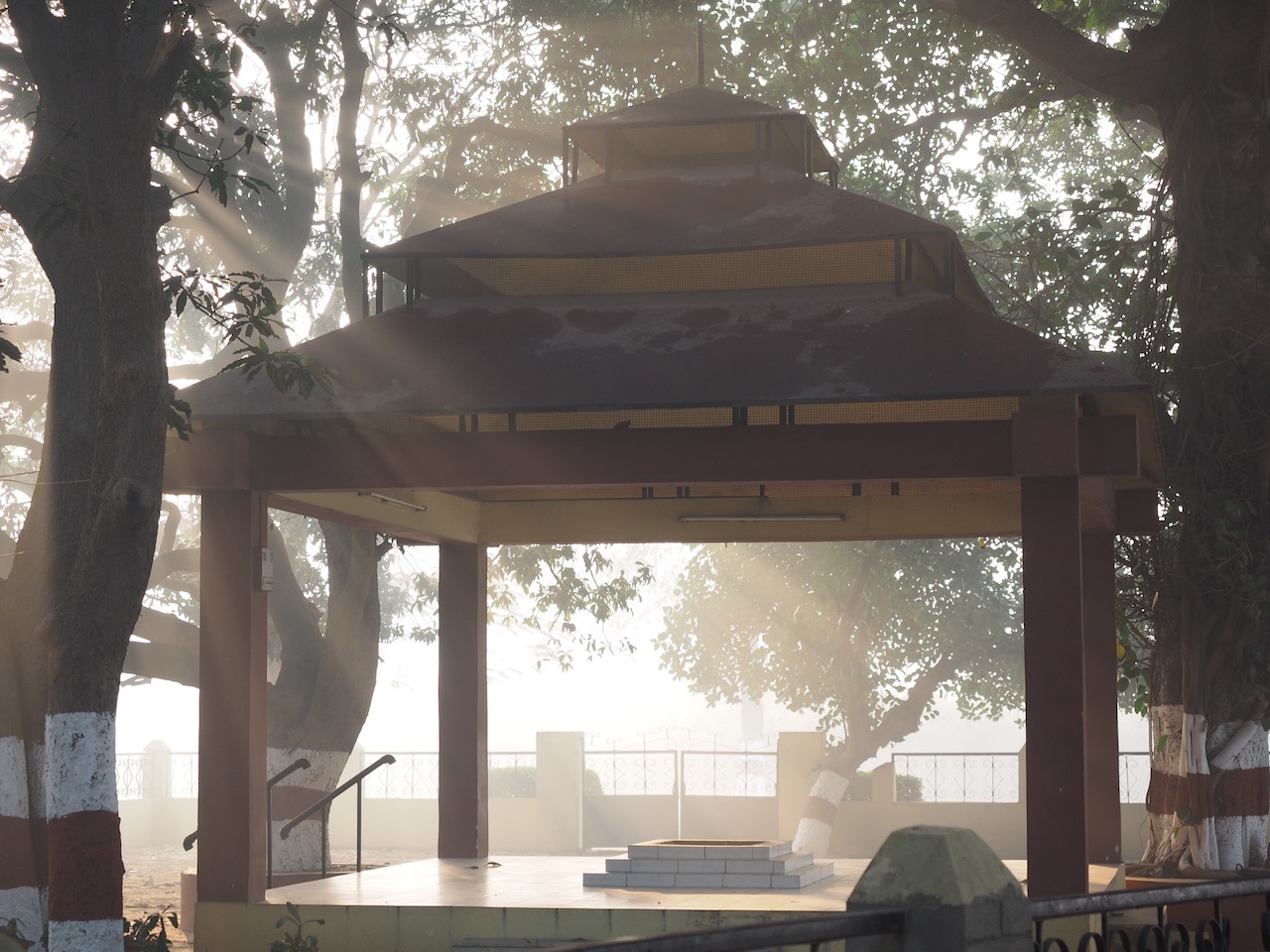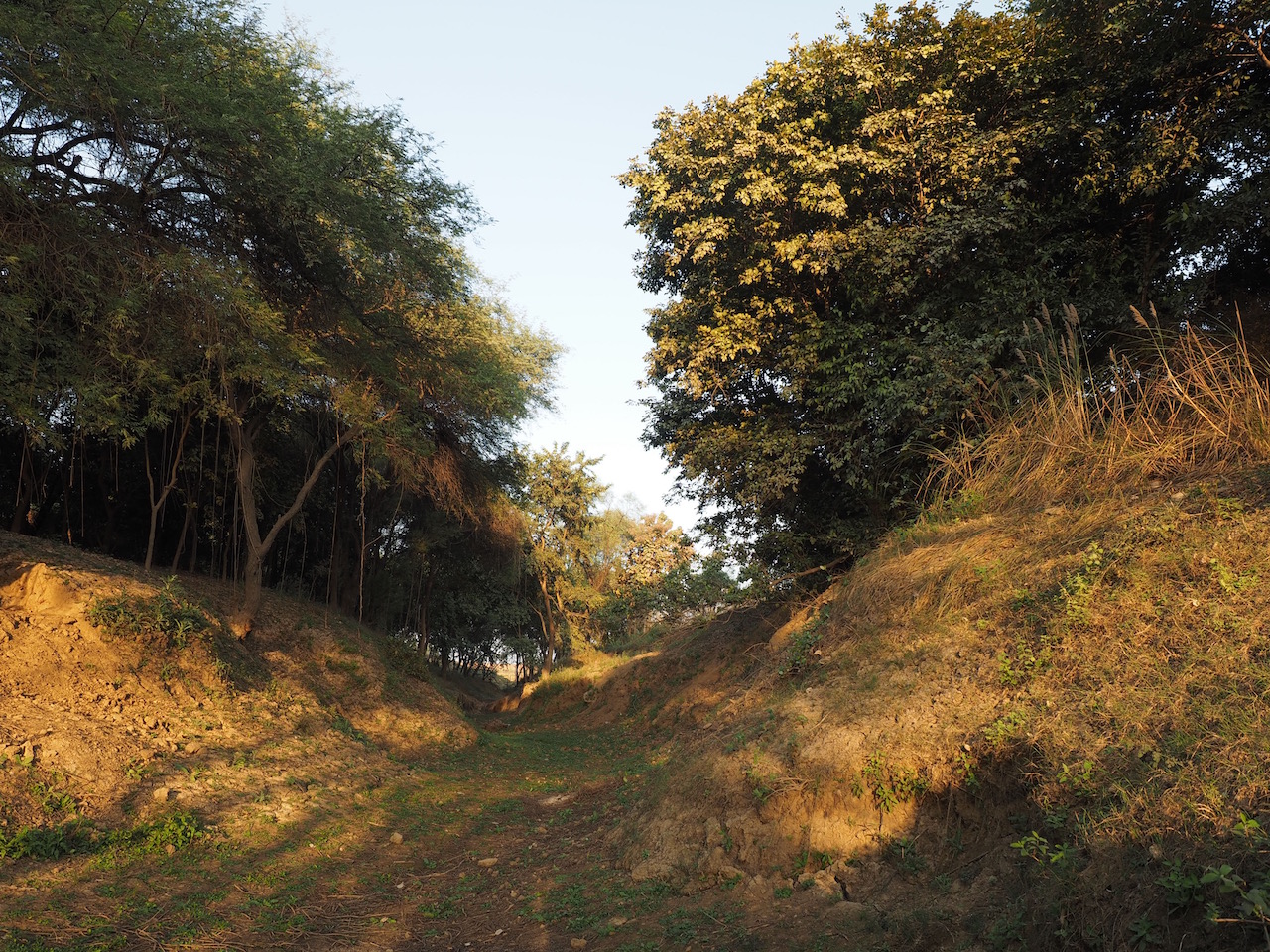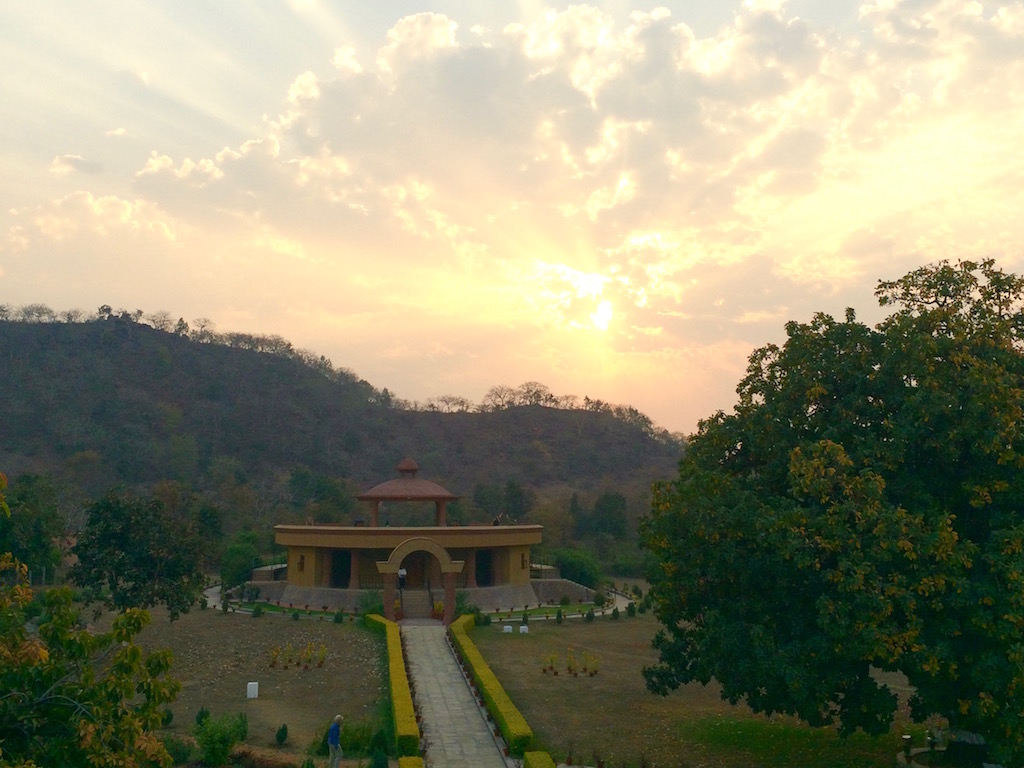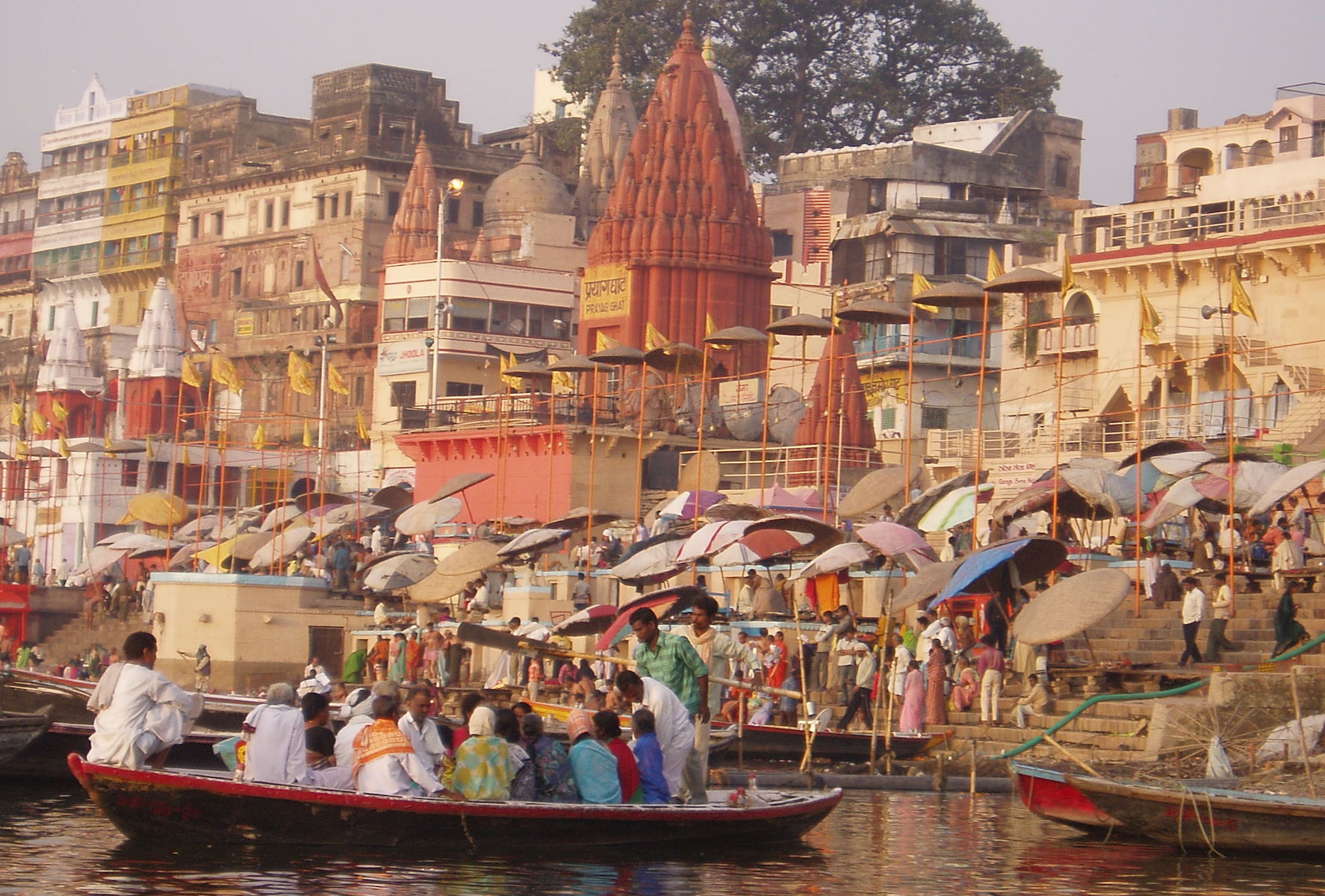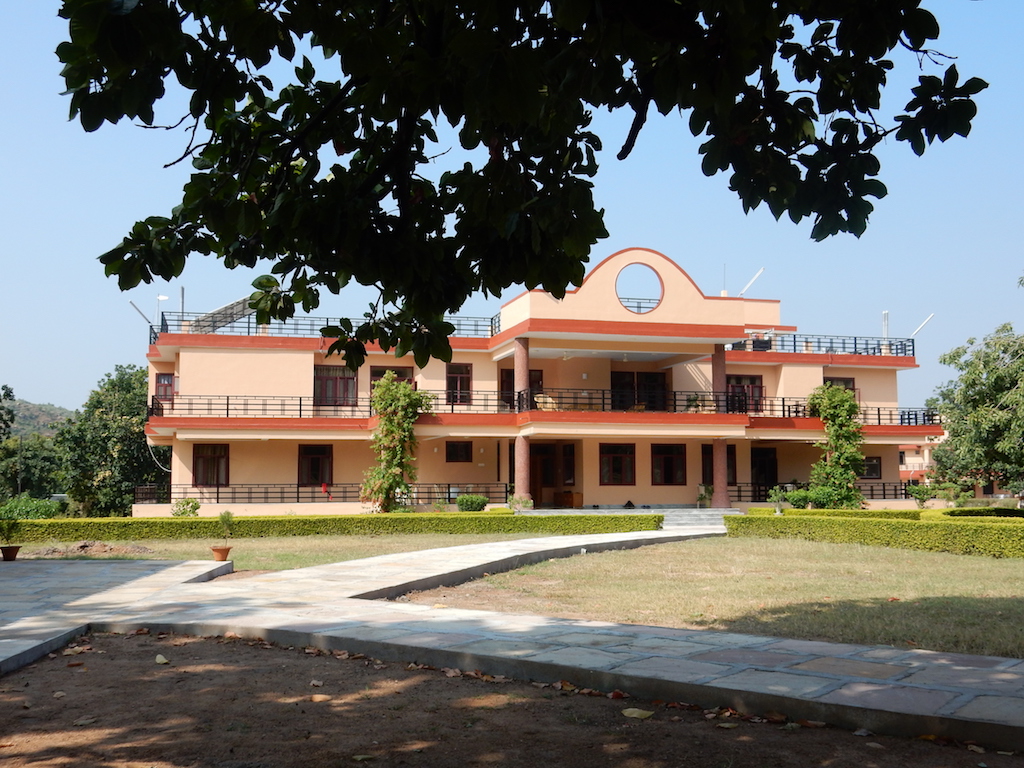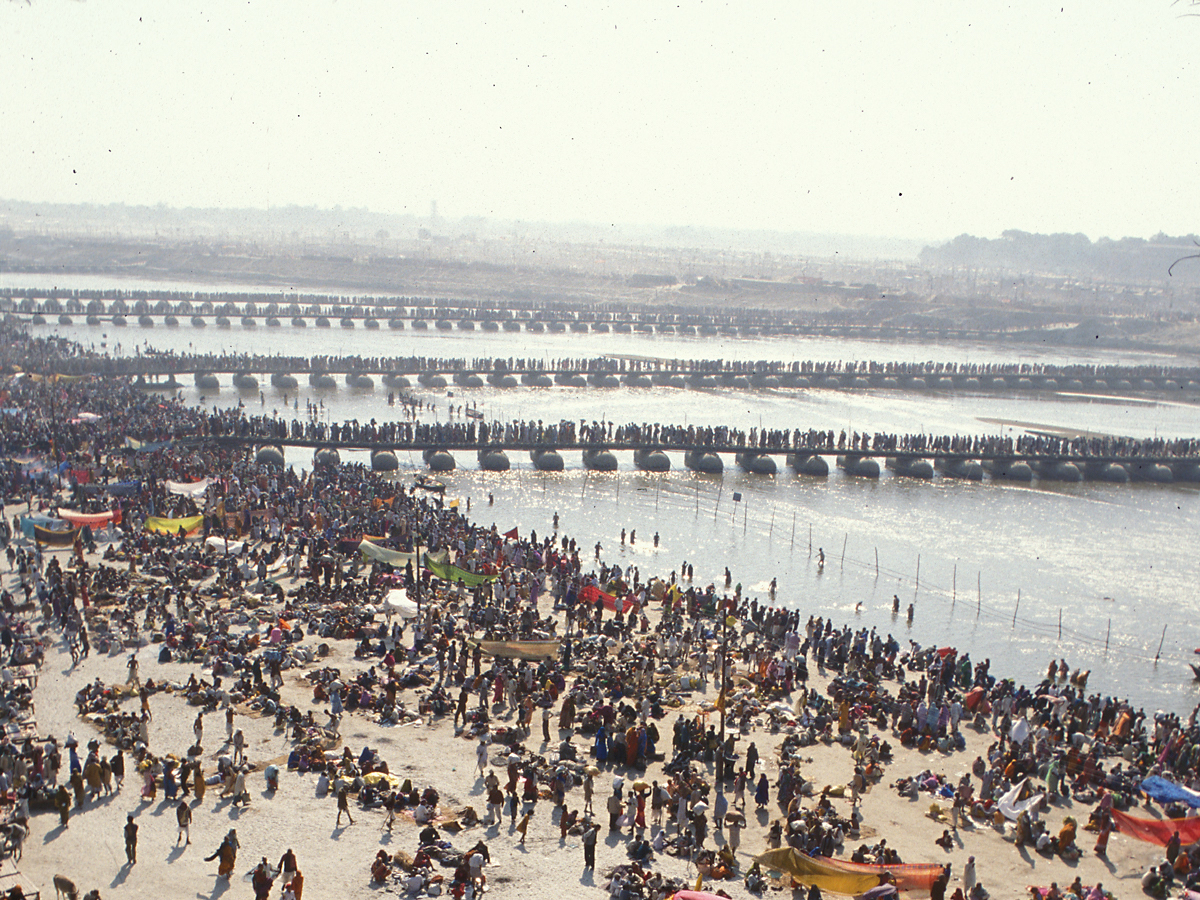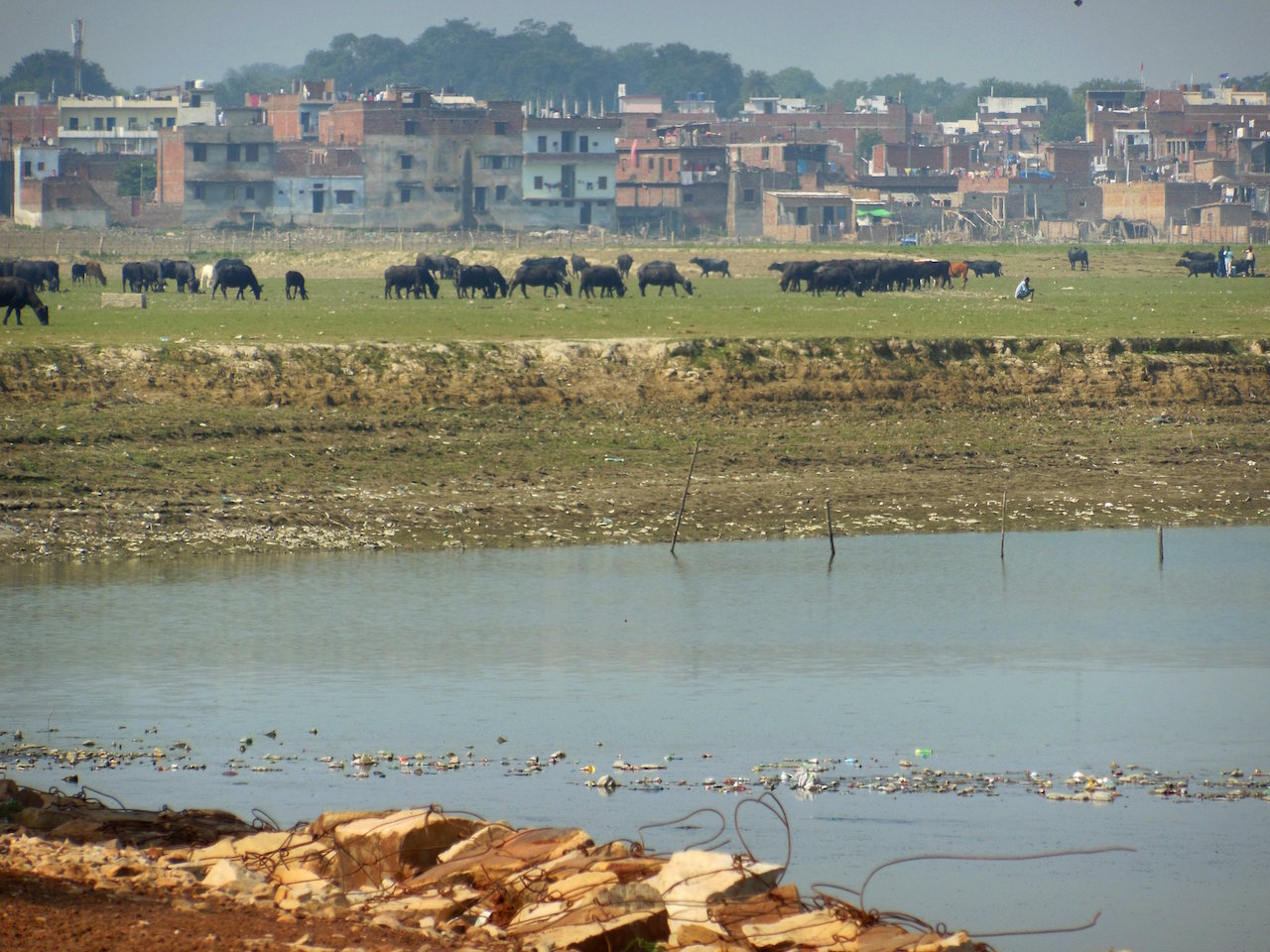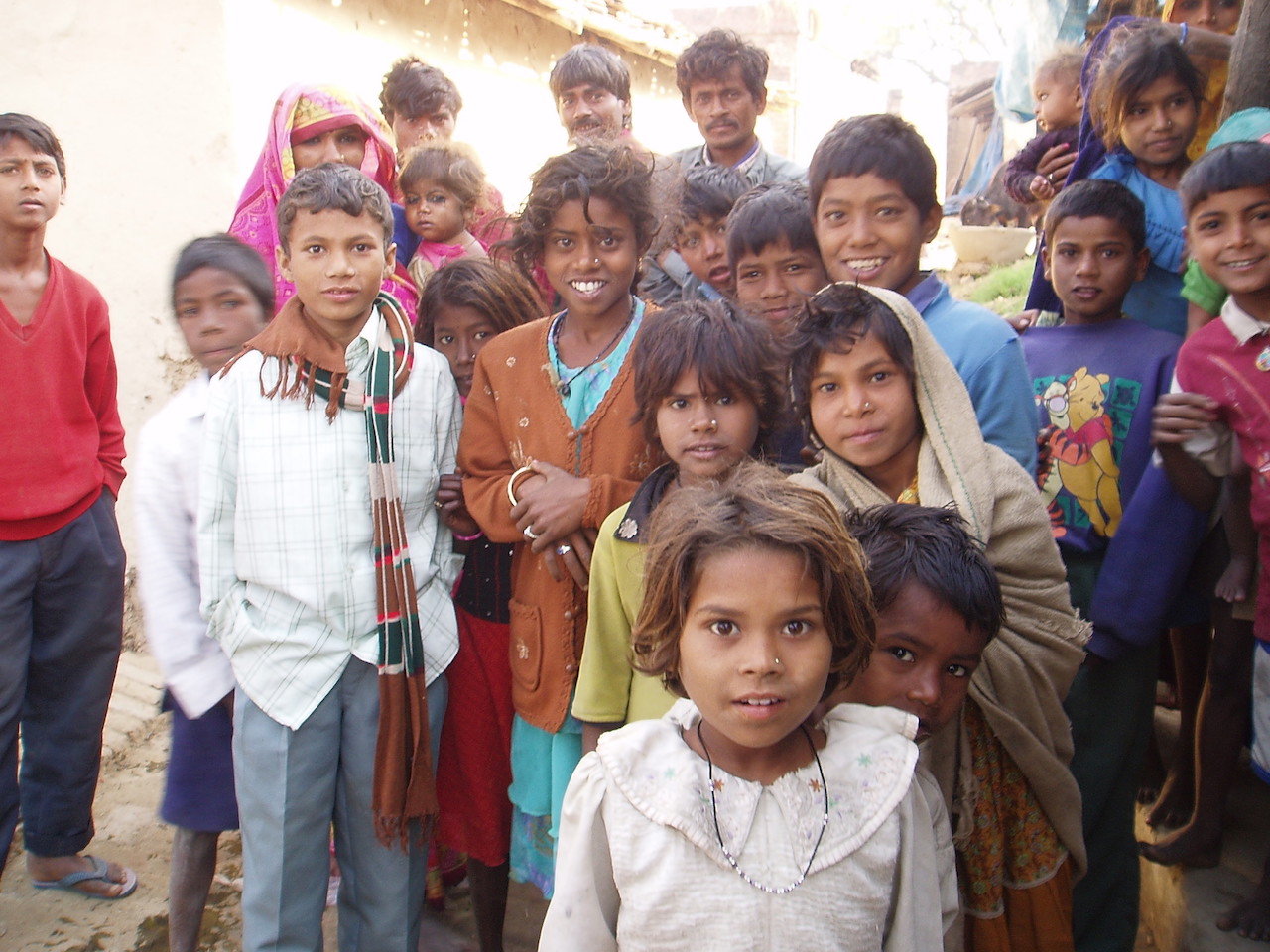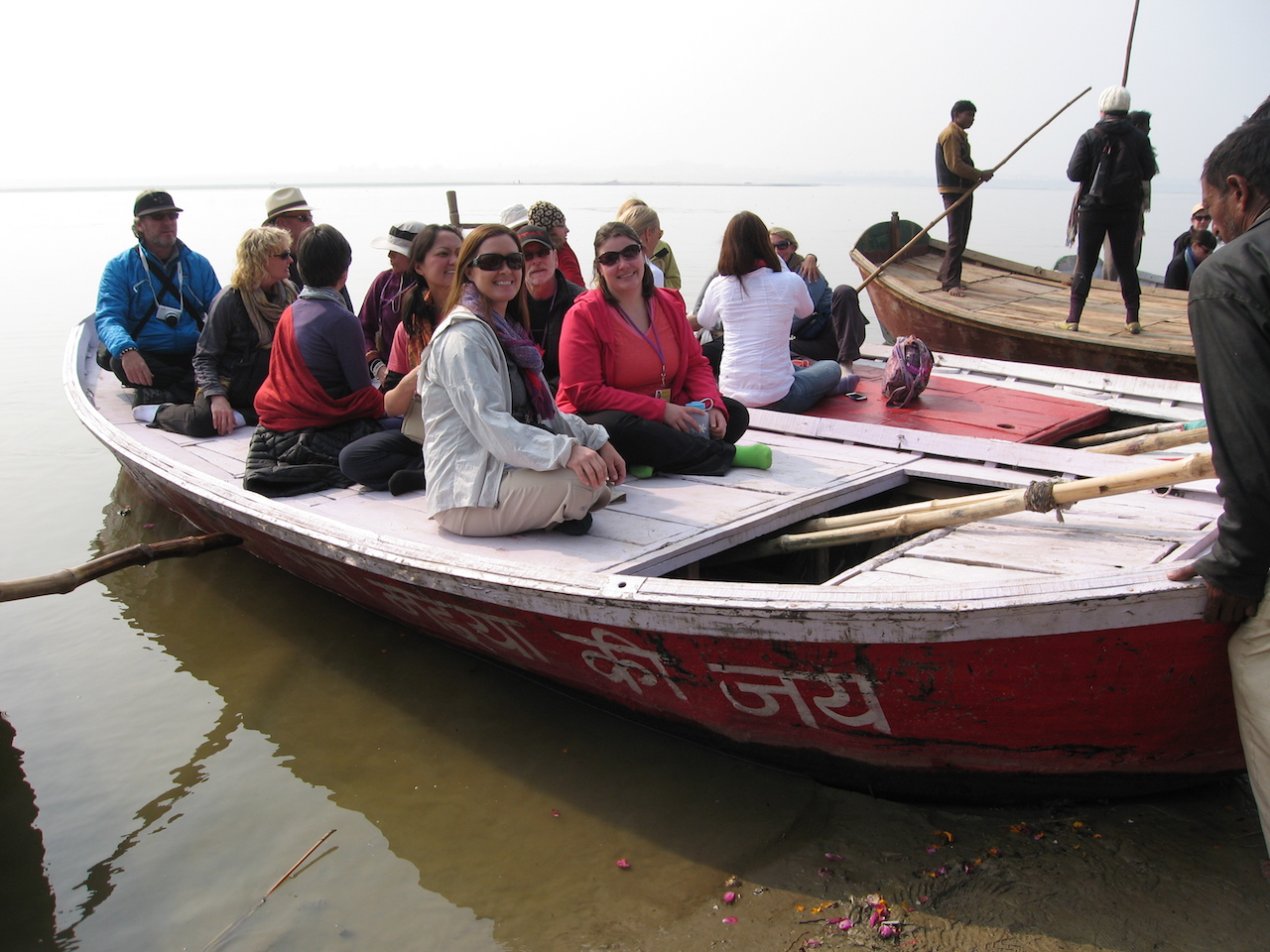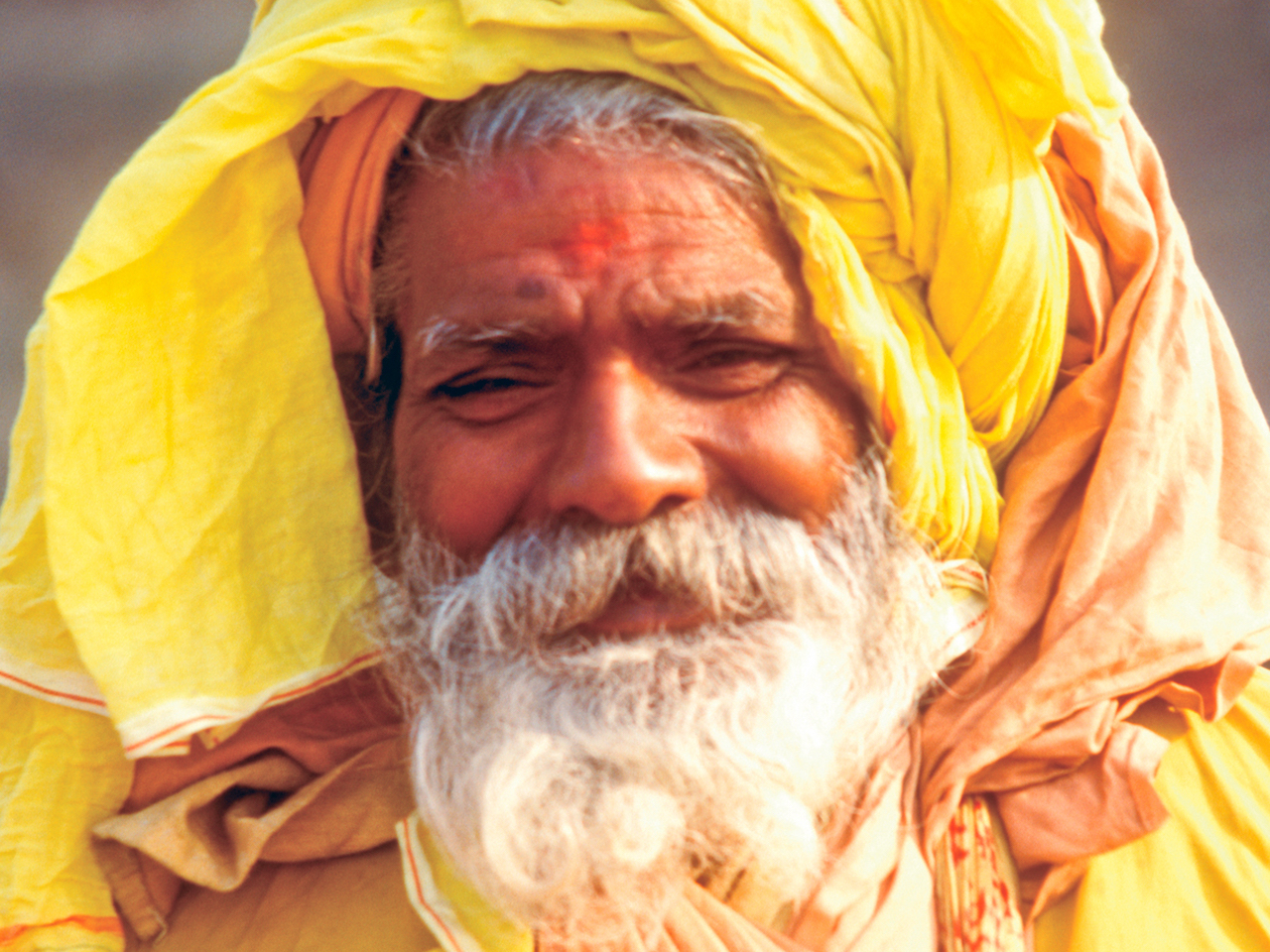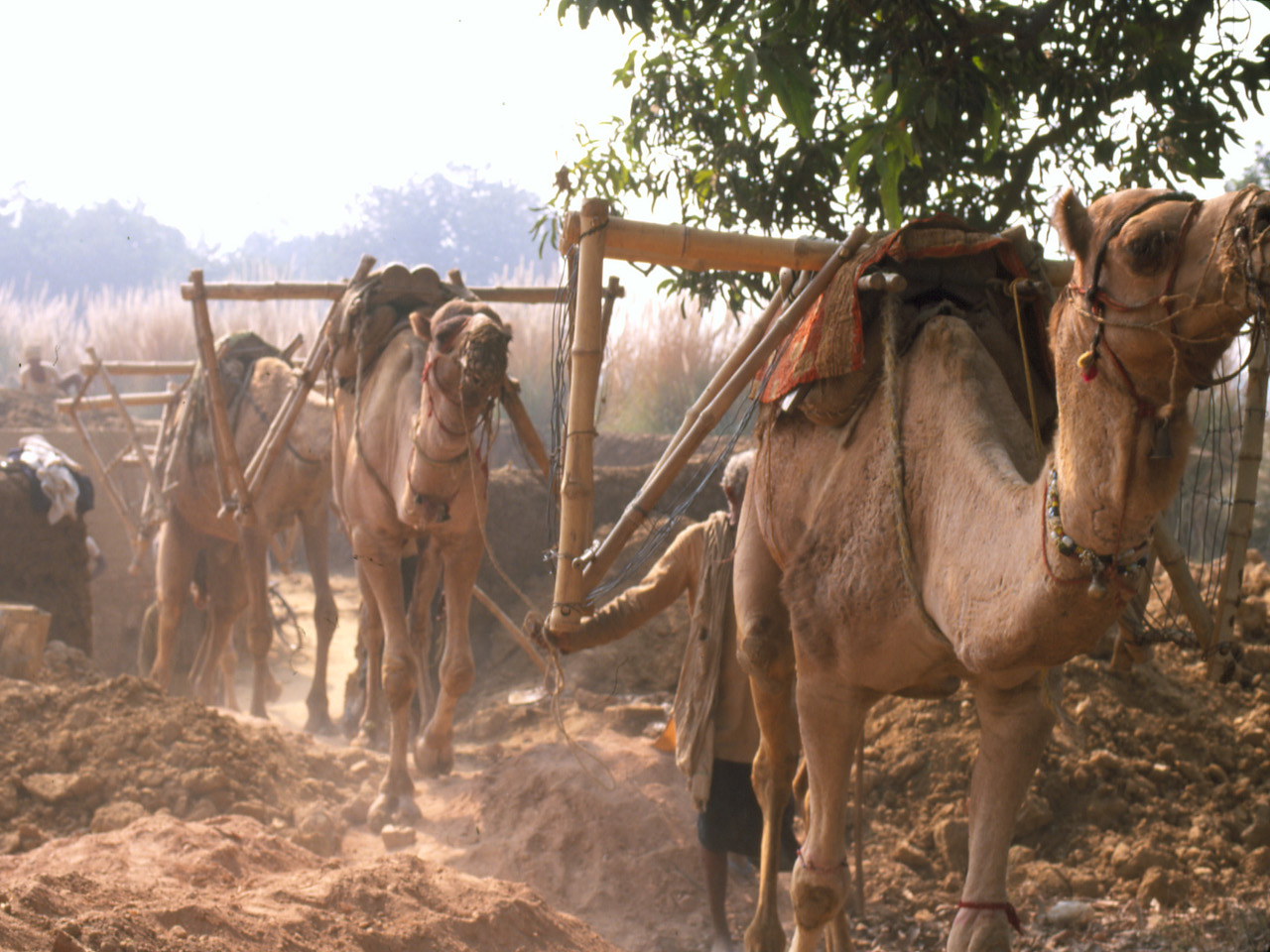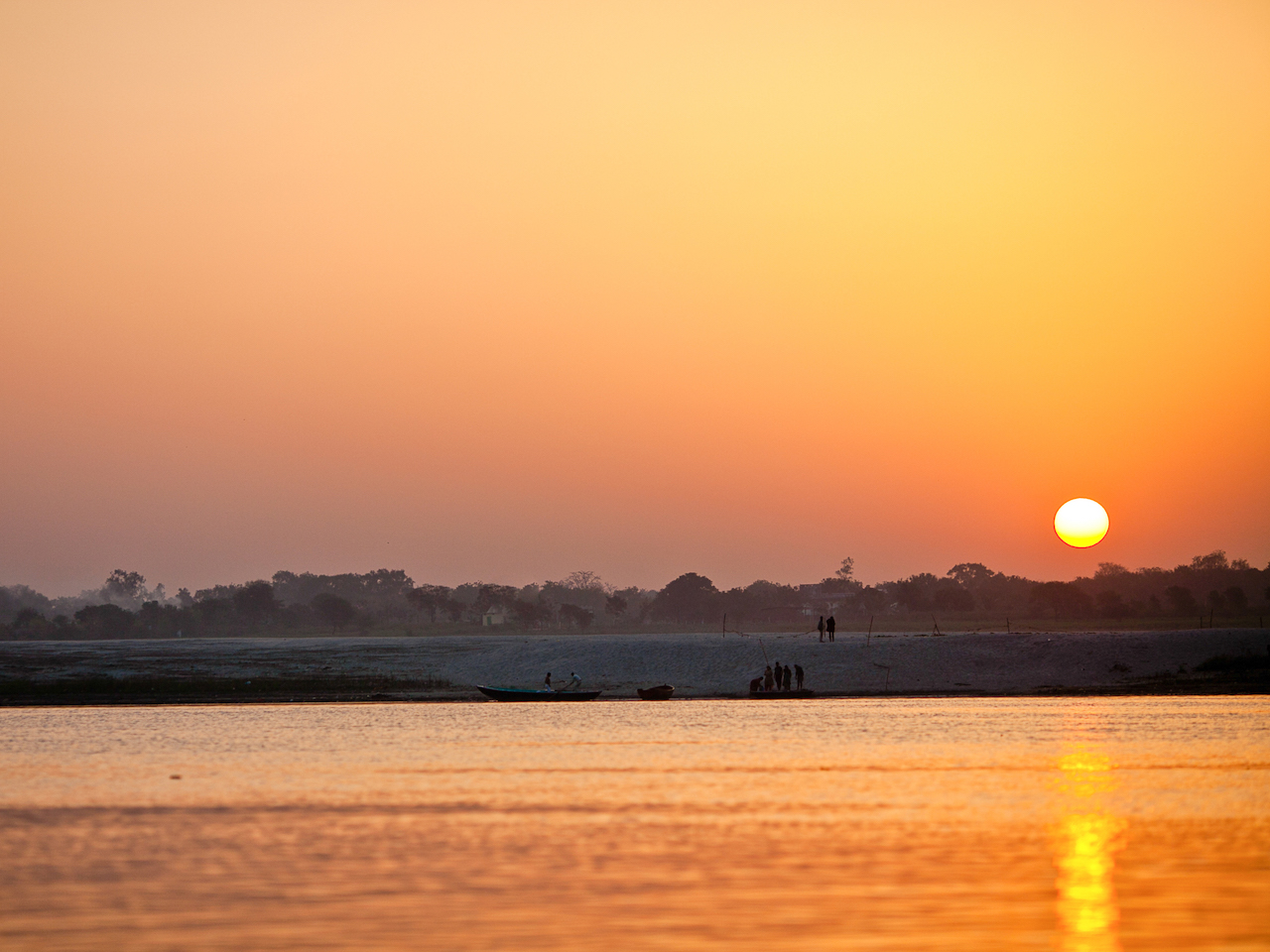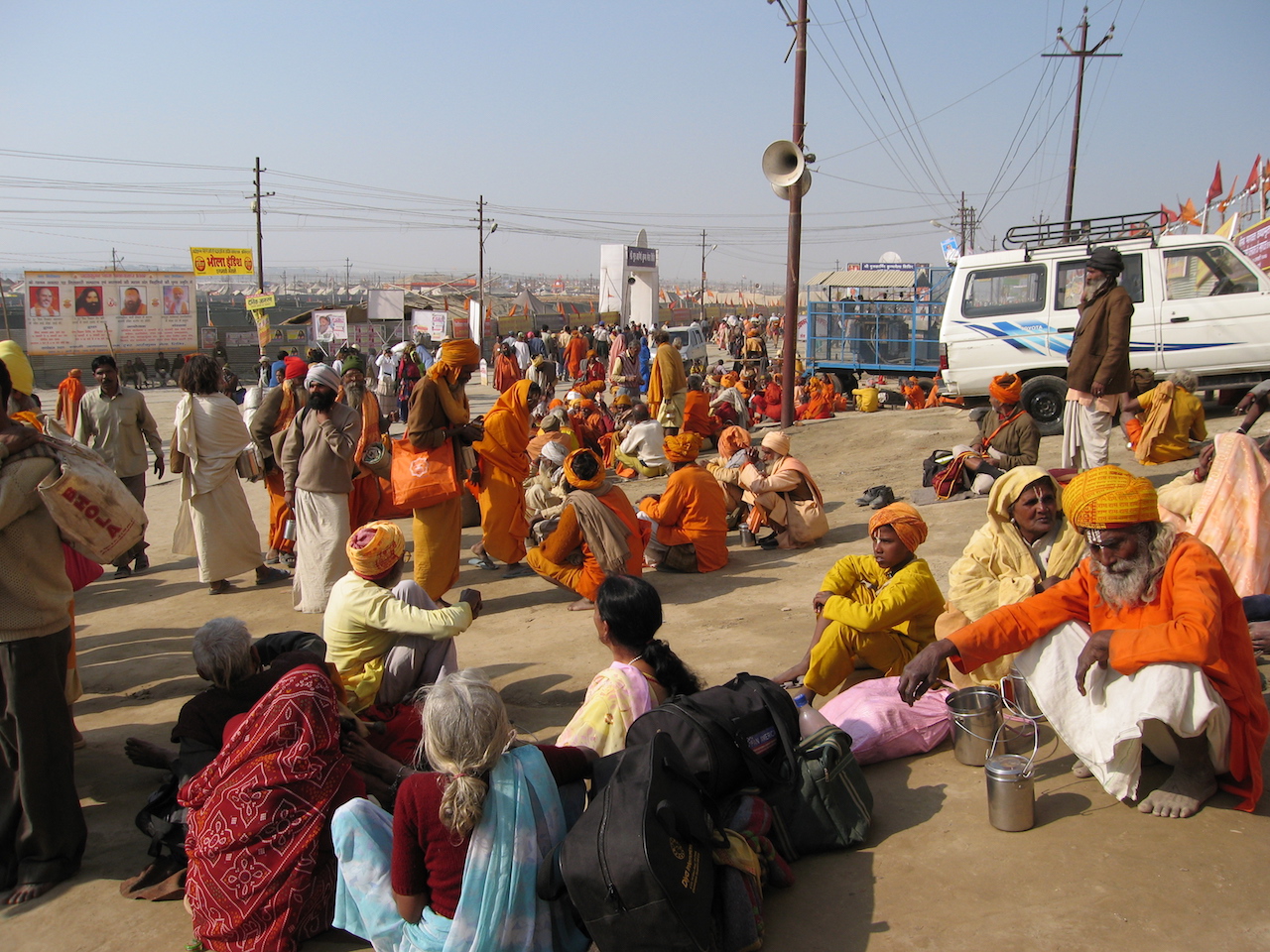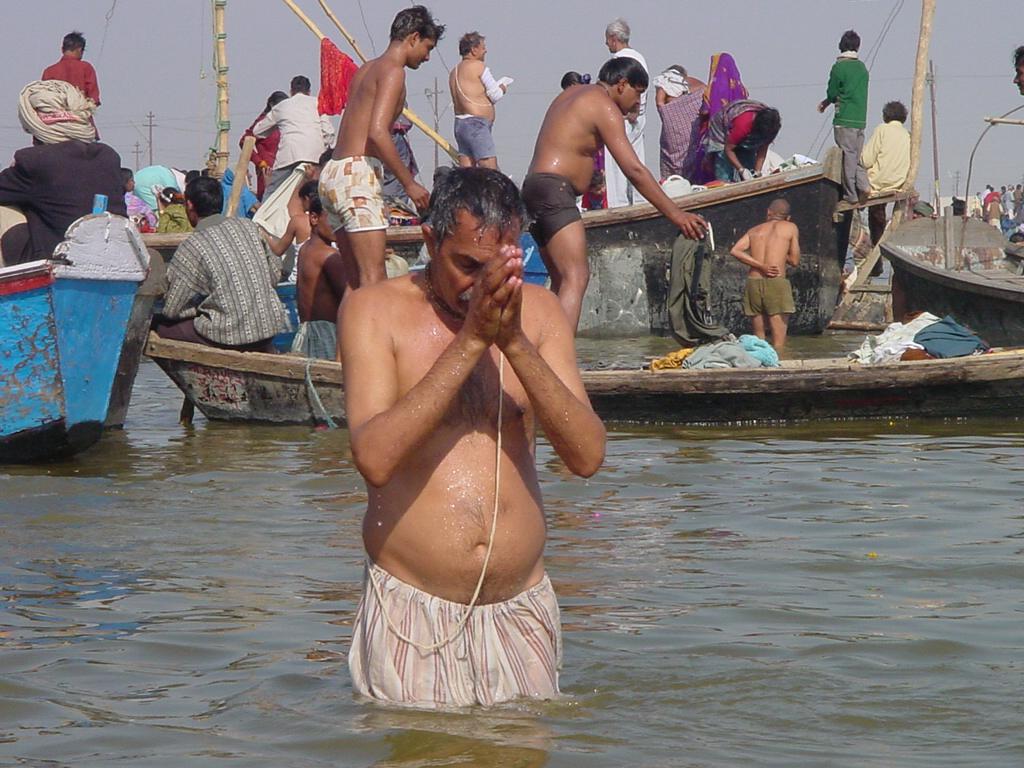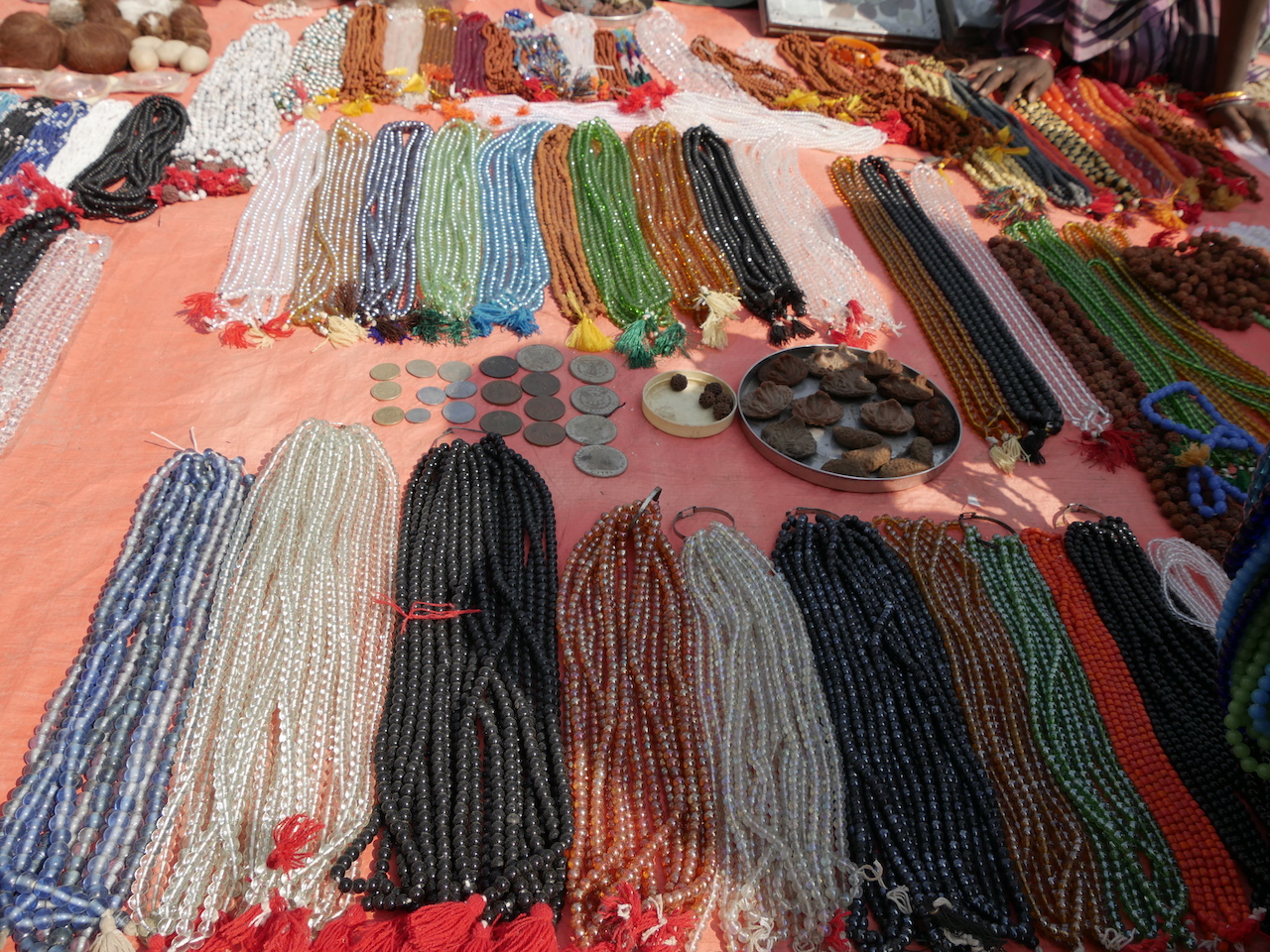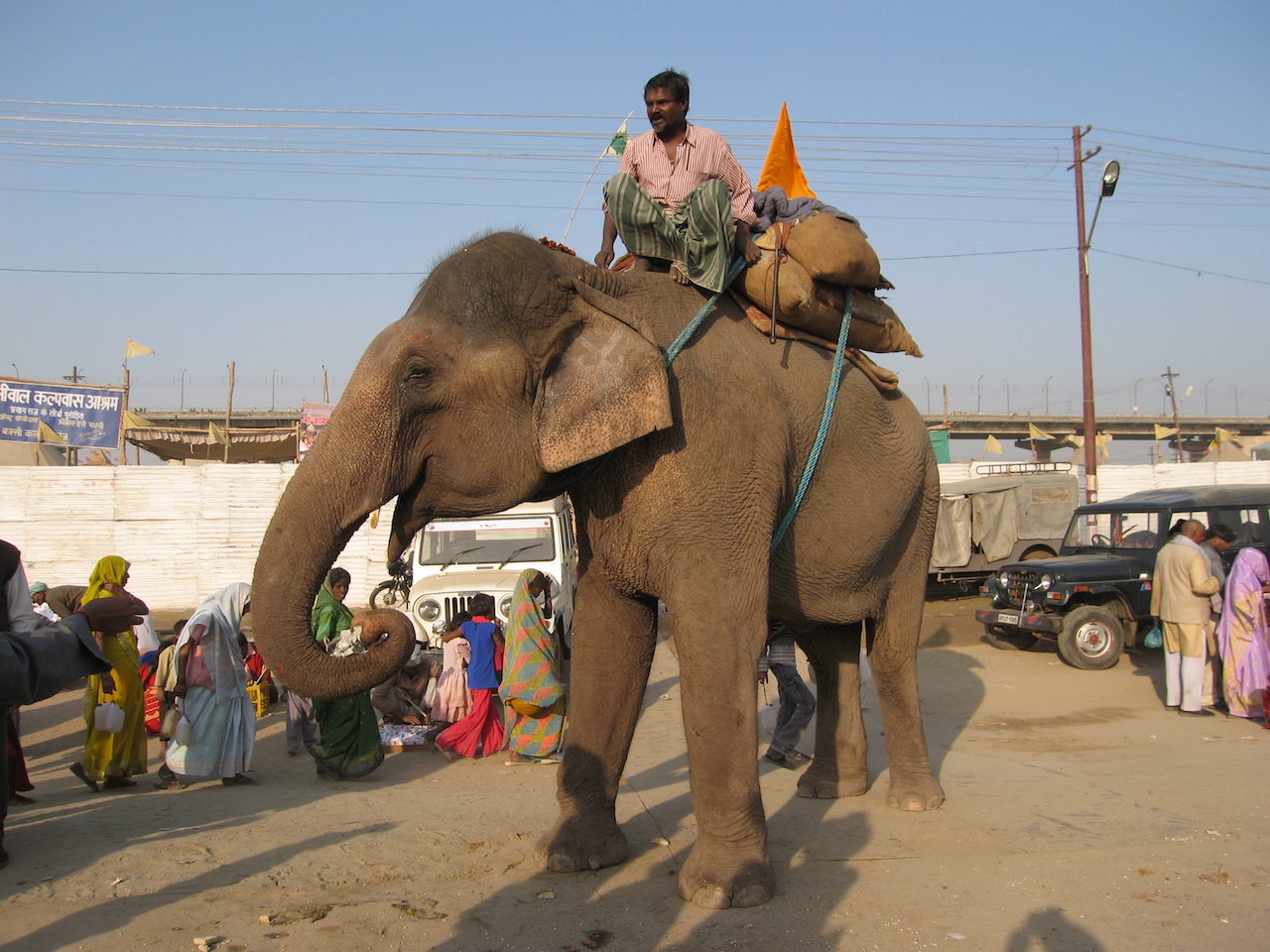Rudra Yaga: Ardha Kumbha Mela 2019
with Pandit Rajmani Tigunait, PhD
February 1–15, 2019
Allahabad, India
Be a force of change.
Participate in Rare Tantric Practice of Rudra Yaga
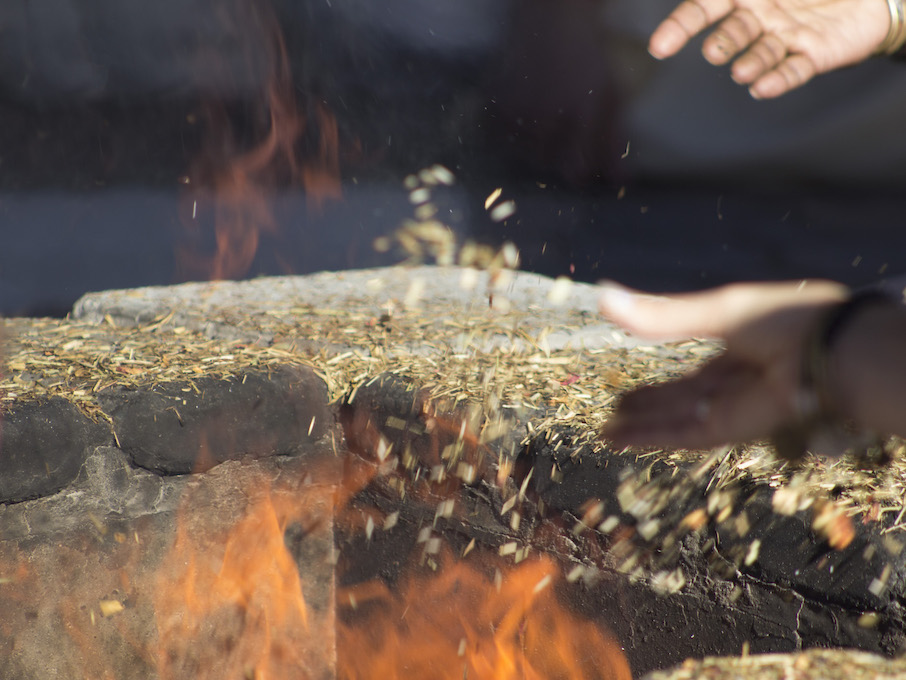
Participate in the rare tantric practice of Rudra Yaga on the occasion of Kumbha Mela and experience the power of collective consciousness in action. Join in daily havan practice (tantric ritual of sacred fire) and mantra recitation.
Intensify Your Knowledge
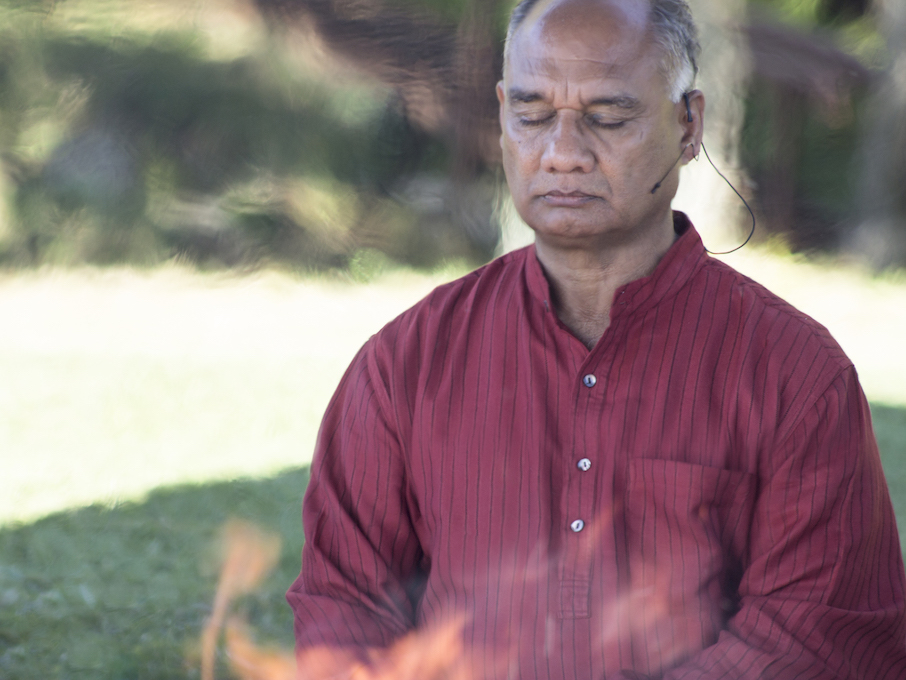
Intensify your knowledge with a living master, Pandit Rajmani Tigunait, in an 8-part study intensive: Rudra Yaga—Gateway to Living Without Fear.
Experience Spiritual Vibrancy
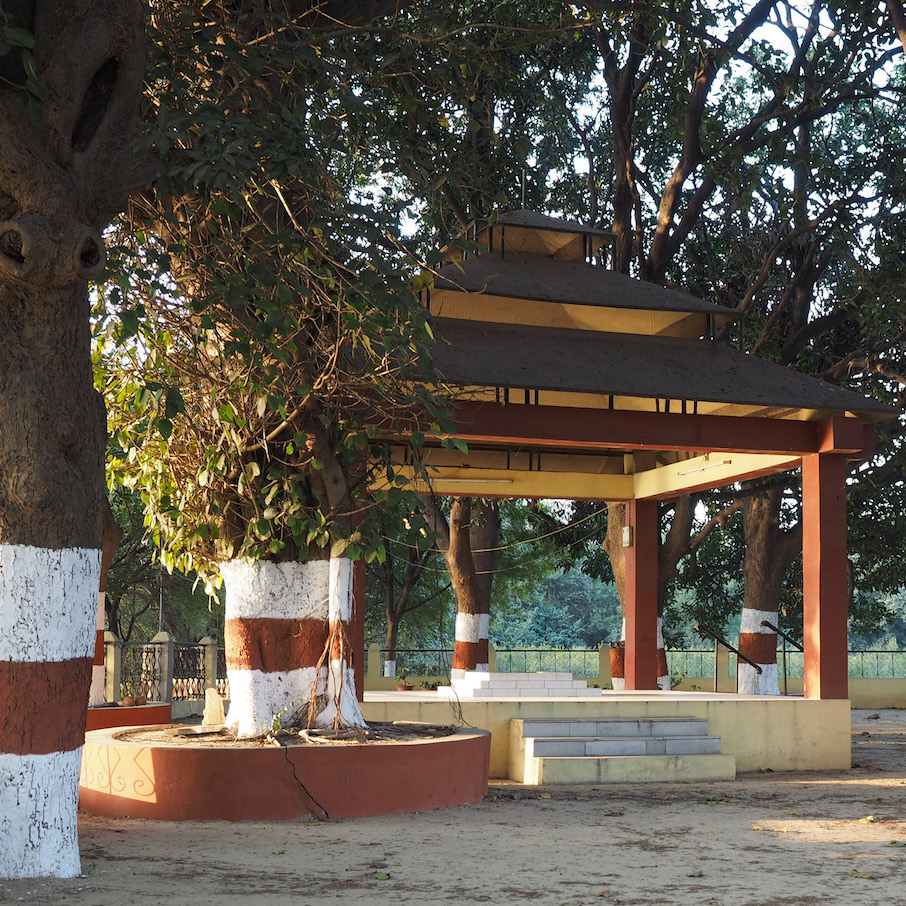
Experience the spiritual vibrancy of living on the bank of the river Ganga, and bask in the beauty and serenity of the Himalayan Institute’s lush 30-acre campus.
Deepen Your Personal Practice
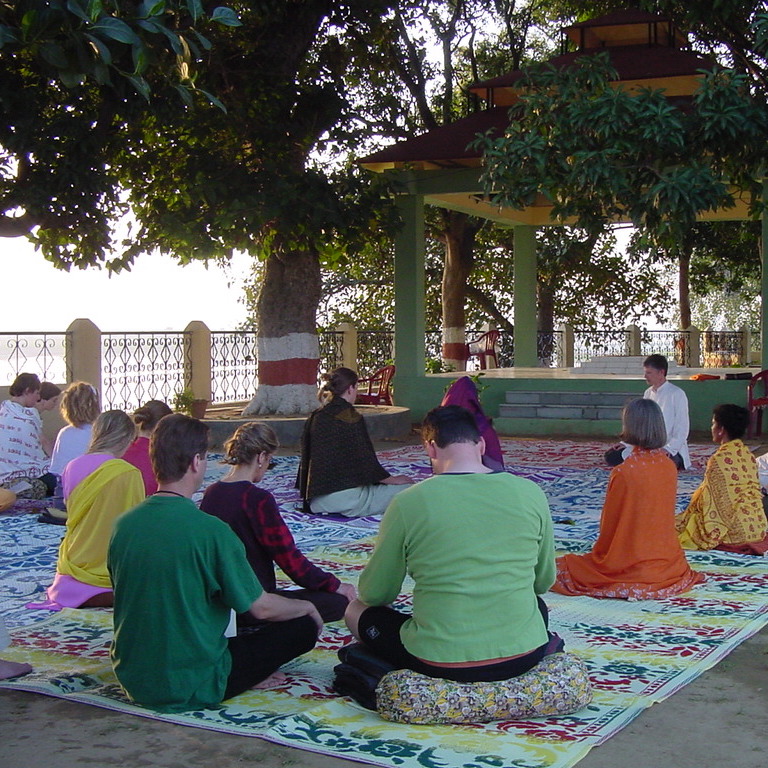
Deepen your personal practice with daily yoga classes and group prayers and meditation with senior teachers of the Himalayan Institute.
Expand Your Capacity
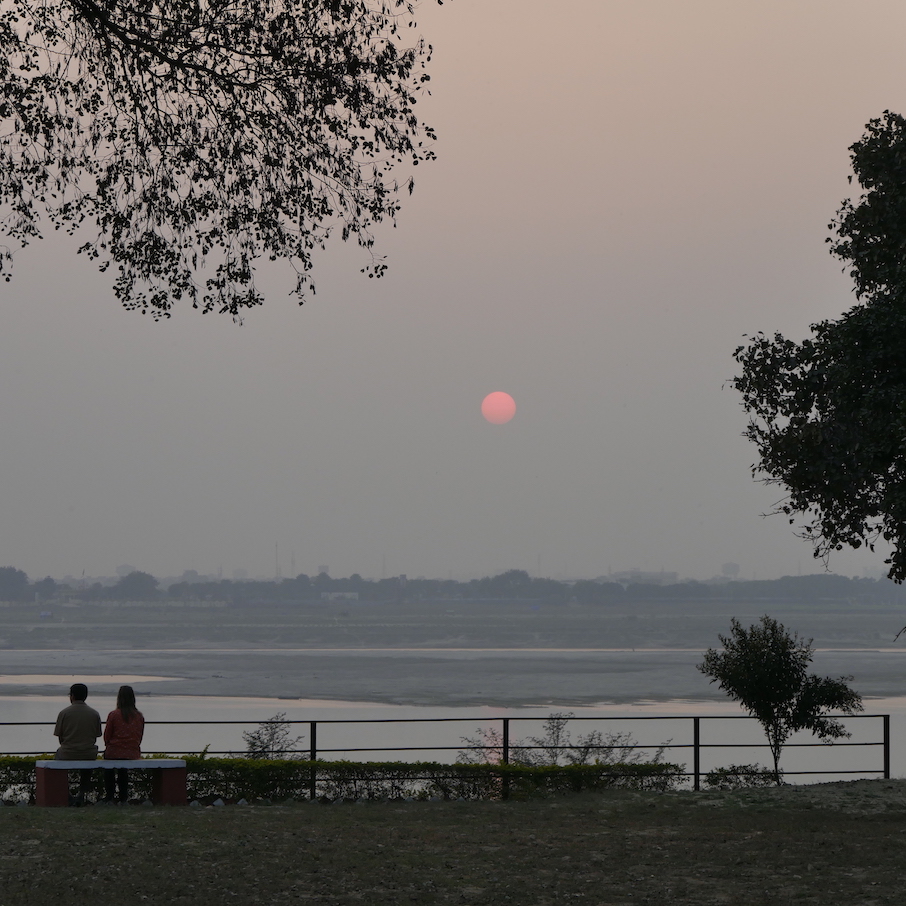
Expand your capacity by intensifying your practice and taking the opportunity to do specialized practices at this most auspicious time and place.
Witness the Kumbha Mela
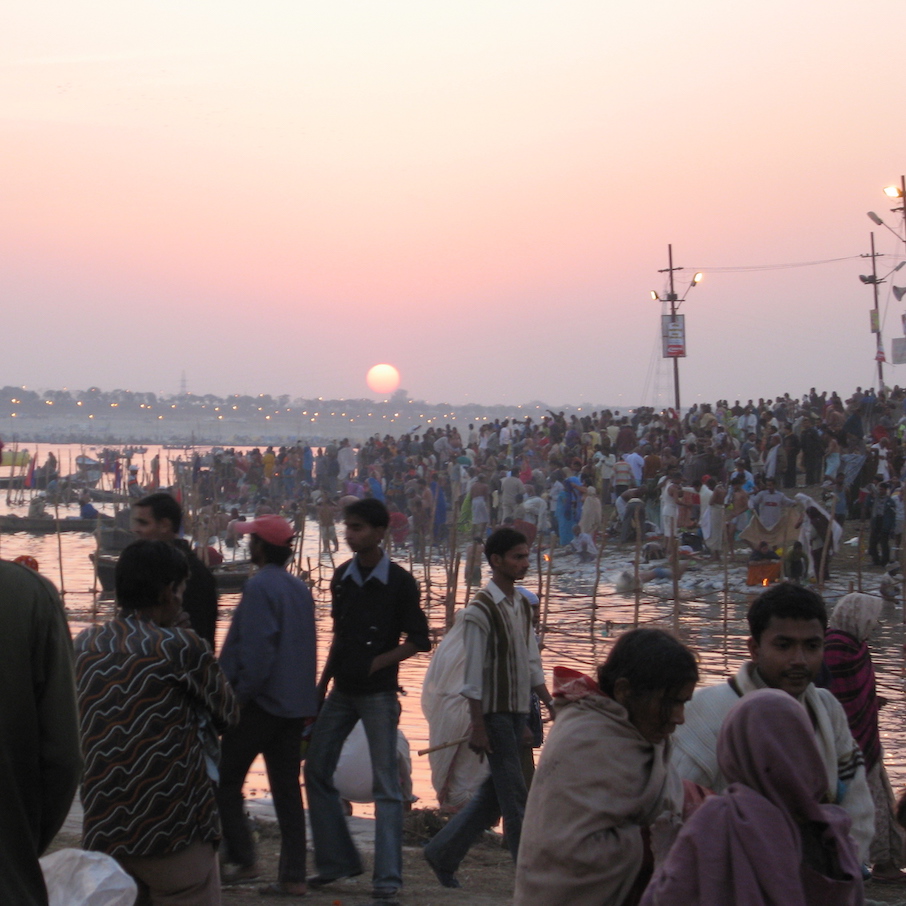
Witness the Kumbha Mela and be a part of this several-thousand year old tradition.
Visit Famous Shakti Shrines
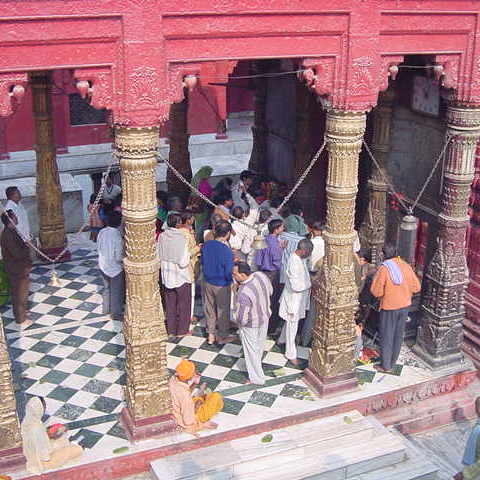
Visit the famous Shakti shrines of Vindhyachal and Allahabad during day-trip pilgrimages.
Download Dynamics of Rudra Yaga PDF to learn more.
Rudra Yaga—Gateway to Living Without Fear
In this study intensive taught exclusively by Pandit Tigunait, learn about the dynamics of Rudra Yaga and how this practice awakens the forces of benevolence, ensuring that we live without fear and uncertainty. This intensive comprises eight sessions, and is meant to explain step-by-step how the Rudra Yantra is invoked in a sacred fire, and how that sacred fire relates to the clusters of shaktis presiding over the different chakras in our body. This study will enable you to understand why, whenever humanity stood at a crossroads, the great masters undertook Rudra Yaga, and how Rudra Yaga created a collective consciousness that afforded humanity the chance to live in harmony.
During these sessions, Pandit Tigunait will take you to the original sources of Rudra Yaga—such scriptures as Netra Tantra, Svacchanda Tantra, Sri Vidyarnava Tantra, and Yajur Veda.
Session Topics
| Session 1: | Dynamics of Rudra Yaga |
| Session 2: | Tapping into the Pool of Mantra Shakti and the Lineage |
| Session 3: | Invoking the Forces of Benevolence for a Vibrant Diversity |
| Session 4: | Invoking 64 Yoginis, the Goddesses of Harmony and Inner Union |
| Session 5: | The Circuits of Rudra Yantra Embodying the Powers of Protection, Guidance, and Stability |
| Session 6: | The Circuits of Rudra Yantra Embodying Intuitive Wisdom and Creativity |
| Session 7: | The Circuits of Rudra Yantra That Instill the Web of Life with Beauty and Unimpeded Growth |
| Session 8: | Rudra Yaga for a Successful Practice of Sri Vidya |
Celebrated every 12 years for millennia, the Kumbha Mela is the largest spiritual gathering on the planet. The Ardha Kumbha Mela is celebrated at the halfway point between every Kumbha Mela, and is imbued with the same spiritual qualities as the Kumbha Mela. Pilgrims, saints, sages, sadhus, and yogis belonging to many different paths and traditions come to the Kumbha Mela to share their knowledge and wisdom, to intensify their own practice, and to walk together on their spiritual journey. Tens of millions gather at the bank of the river Ganga at a time when the planets, constellations, and other celestial bodies are perfectly aligned, creating a powerful vortex of spiritual energy. This energy is further intensified by the collective consciousness of the saints, sages, and pilgrims who gather here with a single shared intention: inner healing and lasting change.
The word kumbha means “vessel or container.” It refers to the vessel that holds the elixir of life, the sap of immortality. The time and place that holds this liquid life force is called the Kumbha Mela. One of India’s many ancient legends tells us that this elixir of life pours down from heaven every 12 years at the confluence of three rivers—the Ganga, the Yamuna, and the mystical Sarasvati—near the modern-day city of Allahabad, in north-central India. For thousands of years, the great sages have undertaken intense group practices at this spiritual locus to channel wisdom into human hearts and to establish harmony in the physical world.
Our Campus
To the thousands of seekers who have visited Himalayan Institute Allahabad, this campus embodies the spirit of the legendary ancient ashrams of the Tradition. Established specifically to host the grand celebration of the once-every-144-years Maha Kumbha Mela, in January 2001, our 30-acre campus is a lush paradise nestled one mile along the bank of the Ganga. The majority of the campus is landscaped with beautiful gardens, lawns, and well-groomed woodlands, with thousands of trees planted on the campus since 1999, and offers seekers extraordinary sunset views over the Ganga.
Removed from the hustle and bustle of the main Mela site, our campus is a safe, peaceful, and self-contained community, with a host of western-style amenities to help ensure that many of the normal discomforts of life in India don’t distract from your pilgrimage. These include 24-hour security for the campus, 24-hour electricity backup facility, UV-purified water available at all meals, and an emphasis on western-standard hygiene and sanitation to help you stay healthy throughout your trip.
Key Amenities
Sacred Grove—The heart of the campus is the Sacred Grove overlooking the river Ganga. The Sacred Grove is a panchavati, a garden consisting of five special types of banyan trees—burgad, pippala, gular, pakad, and bilva—each of which is auspicious for a particular spiritual practice. Many years ago, the trees were planted by Bhole Baba, who later became Swami Rama, the founder of the Himalayan Institute. The local villagers still remember stories told by their parents about the tall, handsome, young yogi who did his sadhana here for almost three years. The Sacred Grove will be at the center of the Rudra Yaga practice, as it houses the havan kund (sacred fire pit), where we will do our daily fire ceremony and group practice. The Sacred Grove will be open throughout the day for personal meditation practice and self-reflection.
Riverfront View—With nearly one mile of waterfront, our campus is blessed with the most vibrant place to experience the transformative power and beauty of the river Ganga. Darshan of the sunset over the Ganga is an experience that will be with you for a lifetime.
Gardens & Groves—Beautified with numerous flower gardens and groves throughout the campus, you’ll feel like you’re living in a tropical paradise. Many of these spots are equipped with contemplation benches and chairs, so you can find your favorite getaway to read, relax, and reflect.
Guest Services & Marketplace—At a central lawn between the Mela Village, Lecture Hall, and Dining Hall lies the Guest Services & Marketplace tent. Here you’ll be able to avail yourself of a range of services, including laundry service, limited Wifi Internet, payphone, lending library and bookstore of Himalayan Institute publications, and a boutique marketplace of unique gifts and daily essentials.
Walking Trails—Enjoy daily walks on our nature trails through the forest and along the Ganga, or on the hand-laid brick roads, lined with arjuna trees, which connect all parts of our 30-acre campus.
Lecture Hall & Yoga Hall—Attend all study intensive sessions in the Lecture Hall, and enjoy yoga classes, practicums, and group meditation in the Yoga Hall; this space will also be available for personal yoga practice when class is not in session.
Campus Tour
Meals
Prepare to be nourished on all levels by our vegetarian meals, freshly prepared with locally grown ingredients. Gluten-free and vegan options will be available at all meals. We’ll begin each day with morning chai and hot water at 5:30 a.m., followed by breakfast from 8:00–9:30 a.m., lunch from 12:30–1:30 p.m., afternoon chai at 4:00 p.m., and dinner from 6:15–7:15 p.m. A private, deep-bore water source provides all the water on campus, including UV-purified drinking water, which will be available in the Dining Hall at all times for guests to replenish their drinking bottles.
Accommodations
Our Mela Village offers you the best room in town, and an intimate, premium experience of pilgrimage “glamping” on the bank of the river Ganga. For your two-week Rudra Yaga practice pilgrimage, you’ll be living with your fellow pilgrims in the Mela Village of nearly 100 shared swiss cottages and twin deluxe tents. Shared swiss cottages will accommodate four guests, while twin deluxe tents will accommodate two guests (see dimensions and cross section below). Specially designed for the Kumbha Mela, our swiss cottages and deluxe tents feature the following amenities:
- High-quality, waterproof canvas over a steel frame
- Fully-enclosed space to keep you protected from the elements
- Lighting and power sockets for charging low-wattage electronics
- Felt carpeting for flooring
- Cots with cotton mattress and bedding including sheets, pillow, wool blanket, and Indian cotton towel
- Large main living area with attached private changing area (in swiss cottages)
The Mela Village also features shared bathroom facilities near each cluster of cottages or tents, with western-style toilets, wash basins with running water, and separate bathing stalls with hot water for bucket bathing.
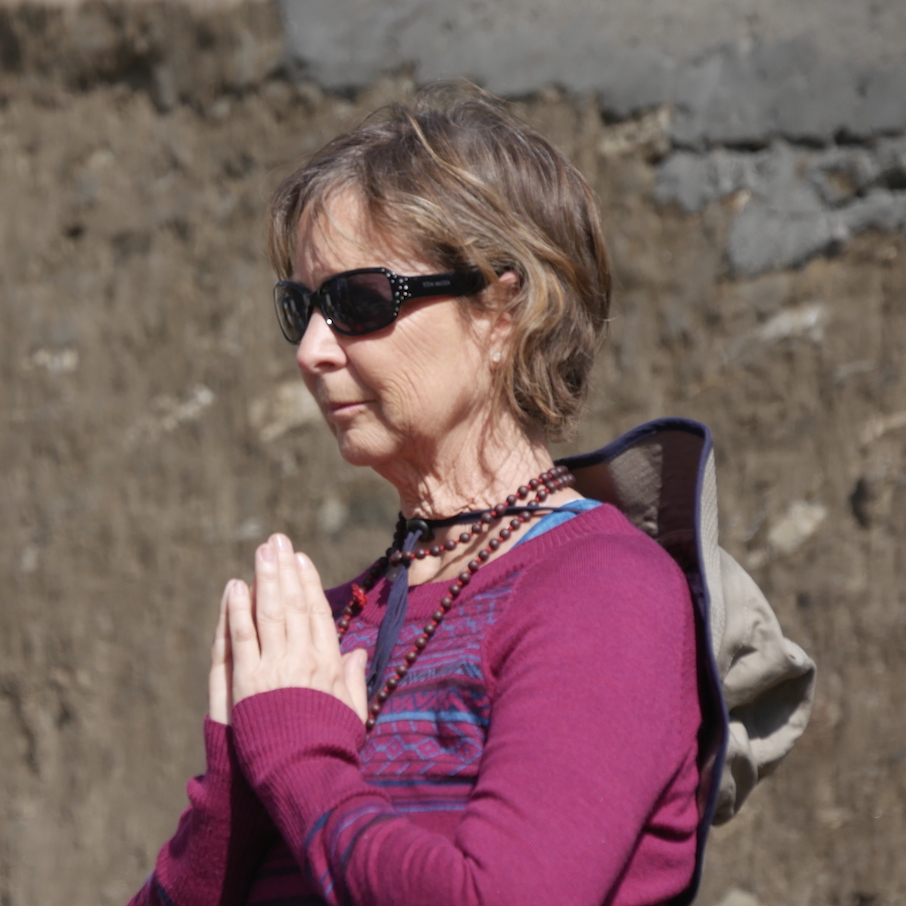
Vindhyachal
Vindhyachal is to the seekers of the Divine Mother what Varanasi is to the seekers of Shiva. One of the most prominent shrines in India, Vindhyachal is home to all the main manifestations of tantric goddesses, but is particularly renowned as the seat of the Divine Mother Durga. Shrines such as Kali Khoh, Ashtabhuja, Tarapitha, Gerua Talab, Motia Talab, and the ashram of the illustrious modern sage, Anandamayi Ma, embody the experiences of the adepts who did their practice at these sacred spots.
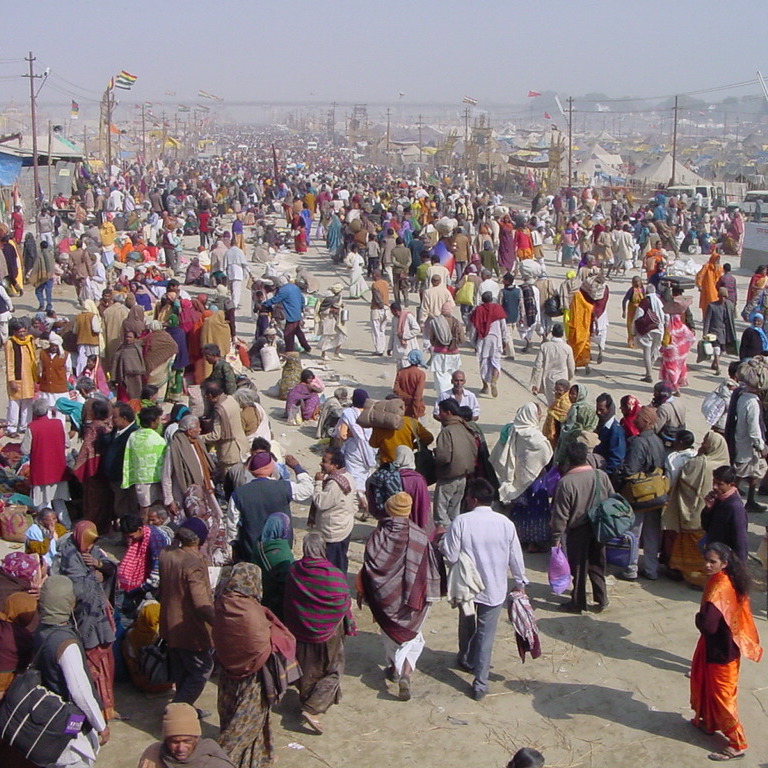
Kumbha Mela Site
Having the sangam, the confluence of the Ganga and Yamuna rivers, at its epicenter, the Kumbha Mela site accommodates the largest gathering of humanity in the world. The sheer size of the tent city, with its streets lined by thousands of ashrams and spiritual centers, makes us realize that the experiences we gain on our spiritual quest are priceless. Here you will see faith’s conquest over logic and reason, and you’ll not need any convincing that happiness is a state of mind. And all of us have access to this state! A day trip to this sea of humanity will make you aware that experiencing unity in diversity is inherent in all of us, and the joy emerging from this experience knows no parallel.
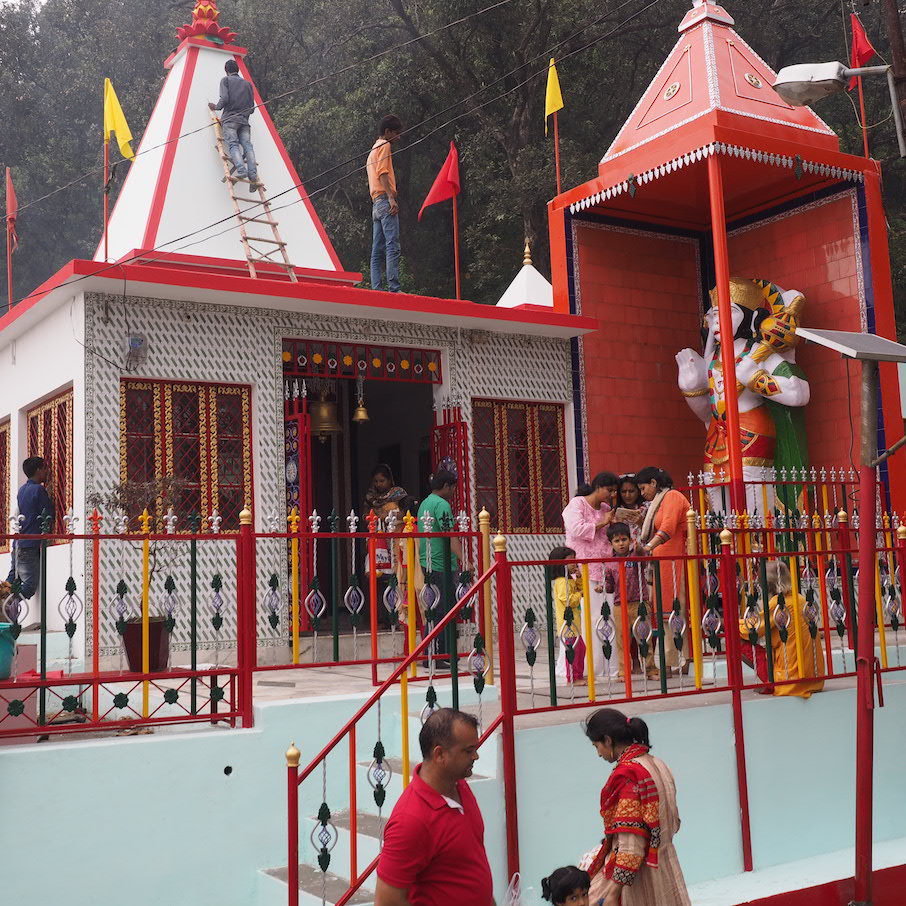
Allahabad City and Nearby Shrines
In addition to the Kumbha Mela and the sangam, Allahabad is known for its ashrams, akhadas, colleges, traditional Sanskrit schools, and shrines. On our day trip to the city, you will have an opportunity to visit a few hidden shrines and temples that have been sheltered from modern commercialism, and that are conducive to our pilgrimage and the practice of Rudra Yaga. Our trip will also include visiting the city’s main commercial district, where you’ll enjoy walking, shopping, and acquainting yourself with the local culture.
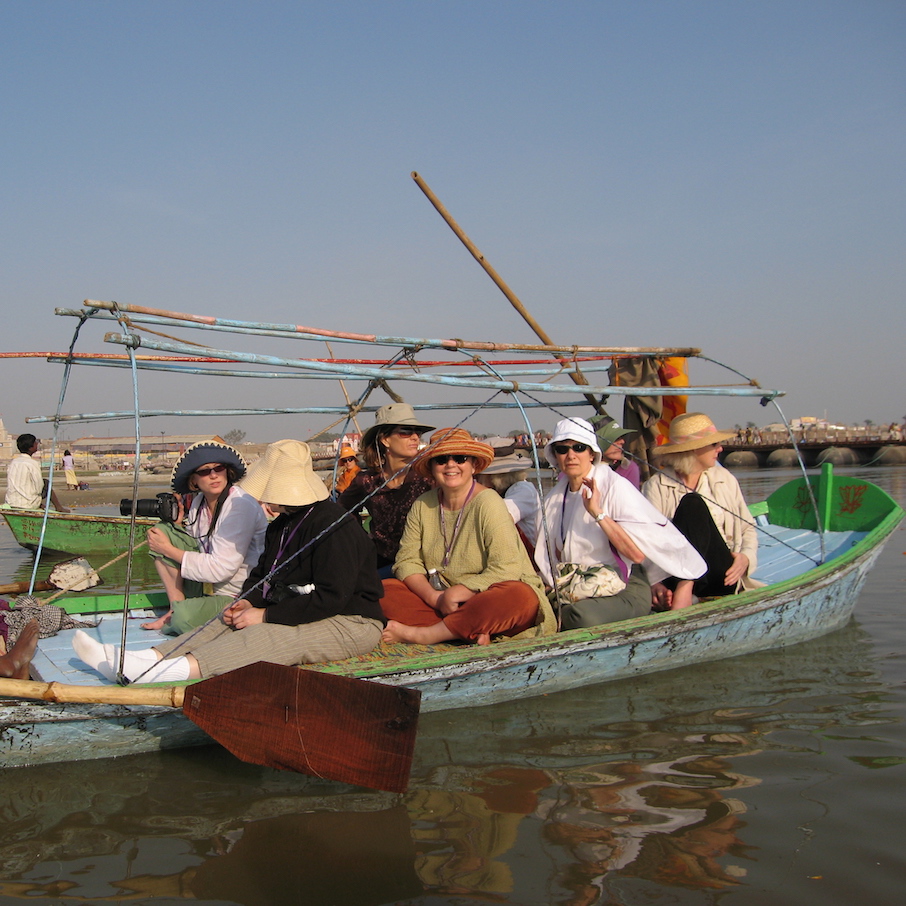
Boat Ride on the Ganga to the Sangam
Pilgrims from traditions across India yearn for the opportunity to experience the sangam at least once in their life. The confluence of the sacred rivers Ganga, Yamuna, and the mystical Sarasvati, the sangam is the epicenter of the spiritual city known as Prayag Raj, Lord of the Confluences, around which modern Allahabad was built. We will travel in traditional hand-rowed boats directly from our campus to the sangam, which is about two miles upriver, while enjoying the serene yet vibrant beauty of the Ganga.
General Itinerary
| February 1 | Participants arrive on their own to Varanasi airport (time window for arrival to be specified). Travel to Allahabad by coach. Chai and welcome on arrival. Dinner and rest. |
| February 2 | Morning orientation to the program and campus; free time in afternoon; evening opening session. |
| February 3–13 | Rudra Yaga 11-day group practice, with 8-session study intensive and day trips to Vindhyachal, Kumbha Mela, and Allahabad. See sample daily schedule. |
| February 14 | Closing Session |
| February 15 | Post-breakfast departure to Varanasi airport by coach. |
*Dates, itinerary, and schedule are subject to change.
Sample Daily Schedule
| 5:30 a.m. | Chai |
| 6:00 a.m. | Group prayers and meditation |
| 6:30 a.m. | Havan practice |
| 8:00 a.m.–9:30 a.m. | Breakfast |
| 9:30 a.m.–12:30 p.m. | Day trip or free time for reading, journaling, personal practice, walks |
| 10:00 a.m. | Optional guided local walks |
| 12:30 p.m.–1:30 p.m. | Lunch |
| 2:00 p.m.–4:00 p.m. | Day trip or free time after lunch for study, personal practice, and rest |
| 4:00 p.m. | Chai |
| 4:30 p.m. | Yoga class or on-campus walk |
| 6:00 p.m. | Group prayers |
| 6:15 p.m. –7:30 p.m. | Dinner |
| 7:30 p.m. | Lecture or evening event |
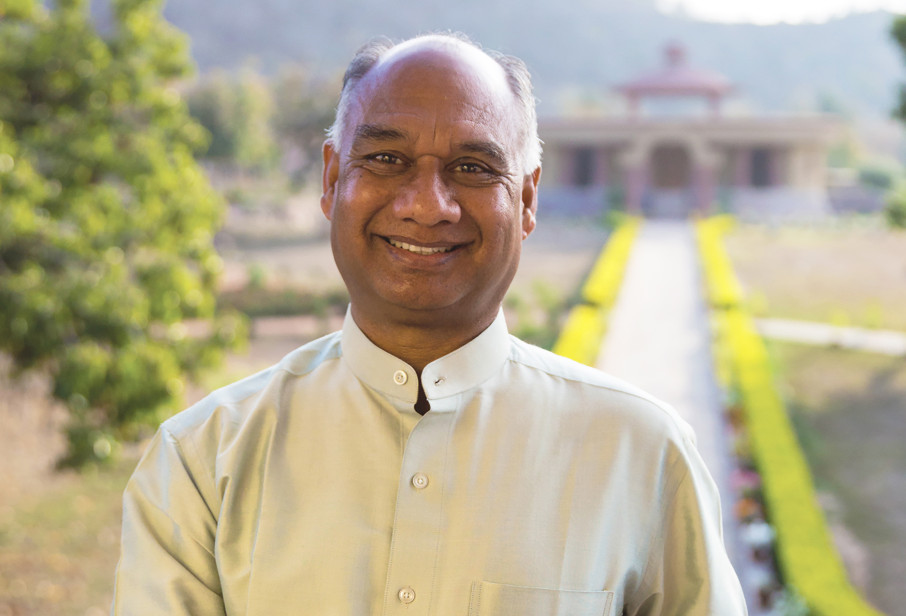
Pandit Rajmani Tigunait, PhD, is a modern-day master and living link to the unbroken Himalayan Tradition. Spiritual head of the Himalayan Institute, Pandit Tigunait is the successor of Swami Rama of the Himalayas. His teachings offer practical guidance on applying yogic and tantric wisdom to modern life. Lecturing and teaching worldwide for more than a quarter of a century, he is the author of fourteen books, including his recently-released The Practice of the Yoga Sutra, and his autobiography Touched by Fire: The Ongoing Journey of a Spiritual Seeker.
Pandit Tigunait holds two doctorates: one in Sanskrit from the University of Allahabad in India, and another in Oriental Studies from the University of Pennsylvania. Family tradition gave Pandit Tigunait access to a vast range of spiritual wisdom preserved in both the written and oral traditions. Before meeting his master, Pandit Tigunait studied Sanskrit, the language of the ancient scriptures of India, as well as the languages of the Buddhist, Jaina, and Zorastrian traditions. In 1976, Swami Rama ordained Pandit Rajmani Tigunait, PhD into the 5,000-year-old lineage of the Himalayan Masters. Over the past 35 years, he has touched innumerable lives around the world as a teacher, humanitarian, and visionary spiritual leader.
Registration Information
Contact
For more information or to make a balance payment:
Call (800) 822-4547 x6 or email [email protected]

